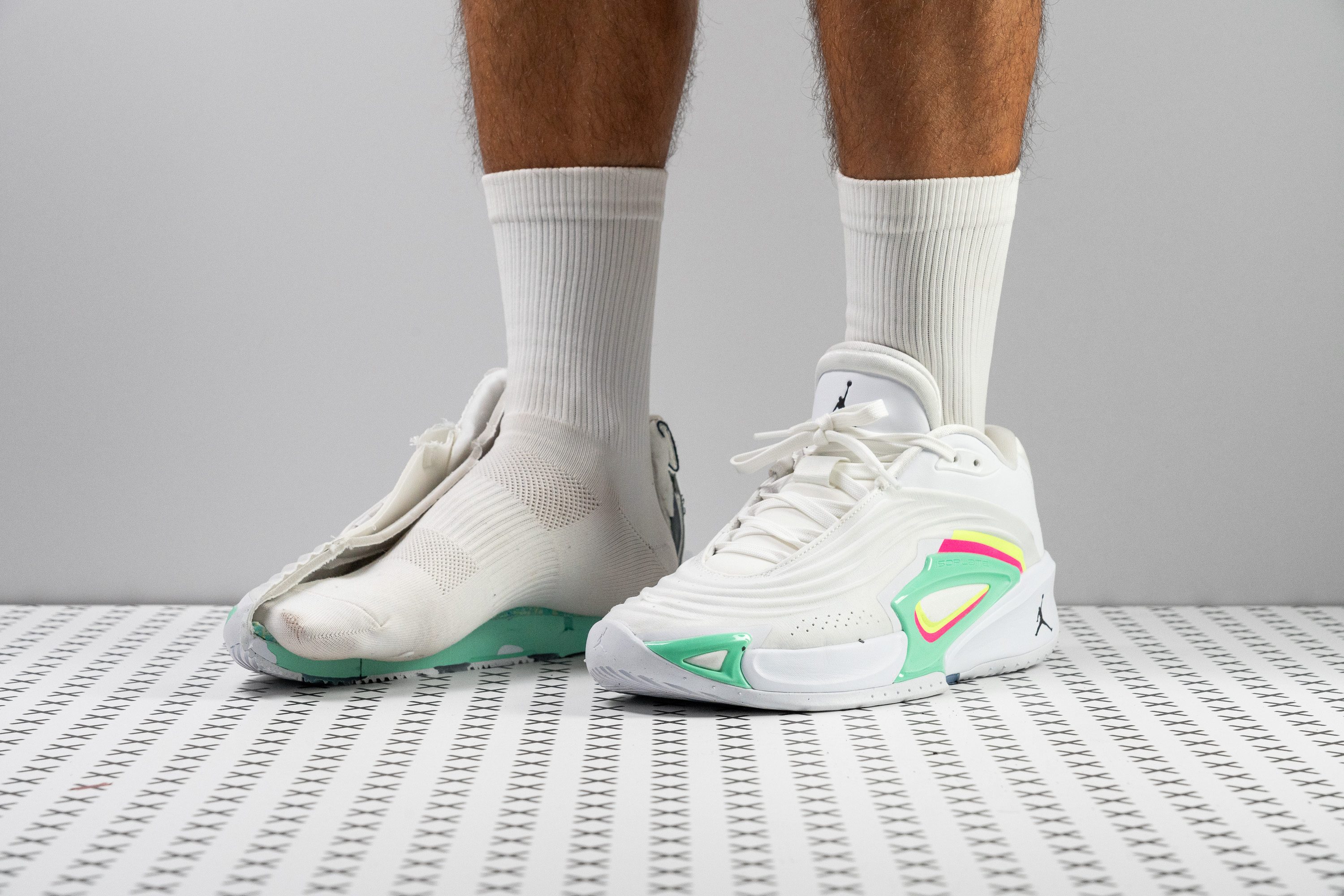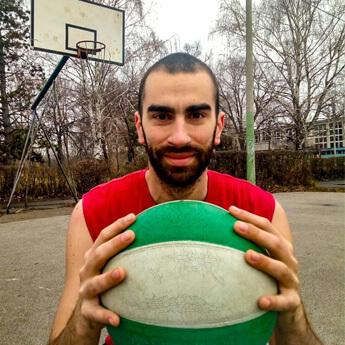Our verdict
- Top pick in best basketball shoes (2024)
- Top pick in best Jordan basketball shoes (2024)
Pros
- Excellent traction
- Great support and lockdown
- Stable jumps thanks to the IsoPlate
- Good mix of impact protection and court feel
- Generously padded yet spacious interiors
- Comfortable in-shoe feel
- Good for wide feet
- Recycled materials
- Recycled materials
Cons
- Feels cheap for its price
- Doesn't have any specific Nike technologies
- Not for streetball
Audience verdict
- Top 29% in basketball shoes
- Top 20% in Jordan basketball shoes
Comparison
The most similar basketball shoes compared
+ + Add a shoe | |||||
|---|---|---|---|---|---|
| Audience score | 89 Great! | 83 Good! | 87 Good! | 89 Great! | |
| Price | £130 | £70 | £135 | £130 | |
| Signature | Luka Doncic | - | Devin Booker | Luka Doncic | |
| Shock absorption | Low | Moderate | Moderate | Low | |
| Energy return | Moderate | Moderate | Low | Moderate | |
| Traction | Moderate | Low | Moderate | Low | |
| Top | Low | Low | Low | Low | |
| Ankle support | ✓ | ✓ | ✓ | ✓ | |
| Weight lab | 13.5 oz / 384g | 11.6 oz / 329g | 13.6 oz / 386g | 12.9 oz / 366g | |
| Lightweight | ✓ | ✓ | ✓ | ✓ | |
| Breathability | Moderate | Breathable | Warm | Moderate | |
| Outsole durability | Decent | Good | Decent | Good | |
| Drop lab | 6.1 mm | 6.4 mm | 7.0 mm | 7.6 mm | |
| Heel stack lab | 27.0 mm | 27.3 mm | 26.9 mm | 26.6 mm | |
| Forefoot | 20.9 mm | 20.9 mm | 19.9 mm | 19.0 mm | |
| Size | Half size small | Slightly small | Slightly small | True to size | |
| Midsole softness | Balanced | Balanced | Balanced | Balanced | |
| Stiffness | Moderate | Flexible | Moderate | Moderate | |
| Torsional rigidity | Stiff | Moderate | Stiff | Stiff | |
| Heel counter stiffness | Stiff | Moderate | Stiff | Moderate | |
| Width / fit | Wide | Narrow | Medium | Medium | |
| Toebox width | Medium | Medium | Medium | Medium | |
| Midsole width - forefoot | Average | Average | Average | Average | |
| Midsole width - heel | Average | Average | Narrow | Average | |
| Heel padding durability | Decent | Decent | Good | Decent | |
| Toebox durability | Decent | Good | Decent | Decent | |
| Insole thickness | Average | Average | Average | Average | |
| Outsole hardness | Hard | Hard | Average | - | |
| Outsole thickness | Average | Average | Average | Average | |
| Heel tab | Finger loop | Extended heel collar | Finger loop | None | |
| Ranking | #25 Top 29% | #45 Bottom 15% | #29 Bottom 45% | #16 Top 31% | |
| Popularity | #40 Top 46% | #21 Top 40% | #12 Top 23% | #20 Top 38% |
Who should buy
Let the Luka 3 give you a brand new view of the Luka shoes if you're looking for:
- Reliable traction no matter the court.
- Great foot containment, stability, and support features.
- A flexible and light pal to try quick moves.
- A shoe that mixes court feel and impact protection

Who should NOT buy
Honestly, we did expect a little bit more from a signature shoe of 130 dollars. We thought the brand would include some specific technologies in the midsole, but that wasn't the case. If that's what you were after, we believe the Nike KD 17 might be your cup of tea.
After our wear tests playing streetball and our lab Dremel tests, we've also verified it's not the best to play outdoors. Its materials are not the most durable, and it doesn't feature strong toe-dragging protection at the forefoot. If you want to play outside, you should have a look at our streetball hoopers.
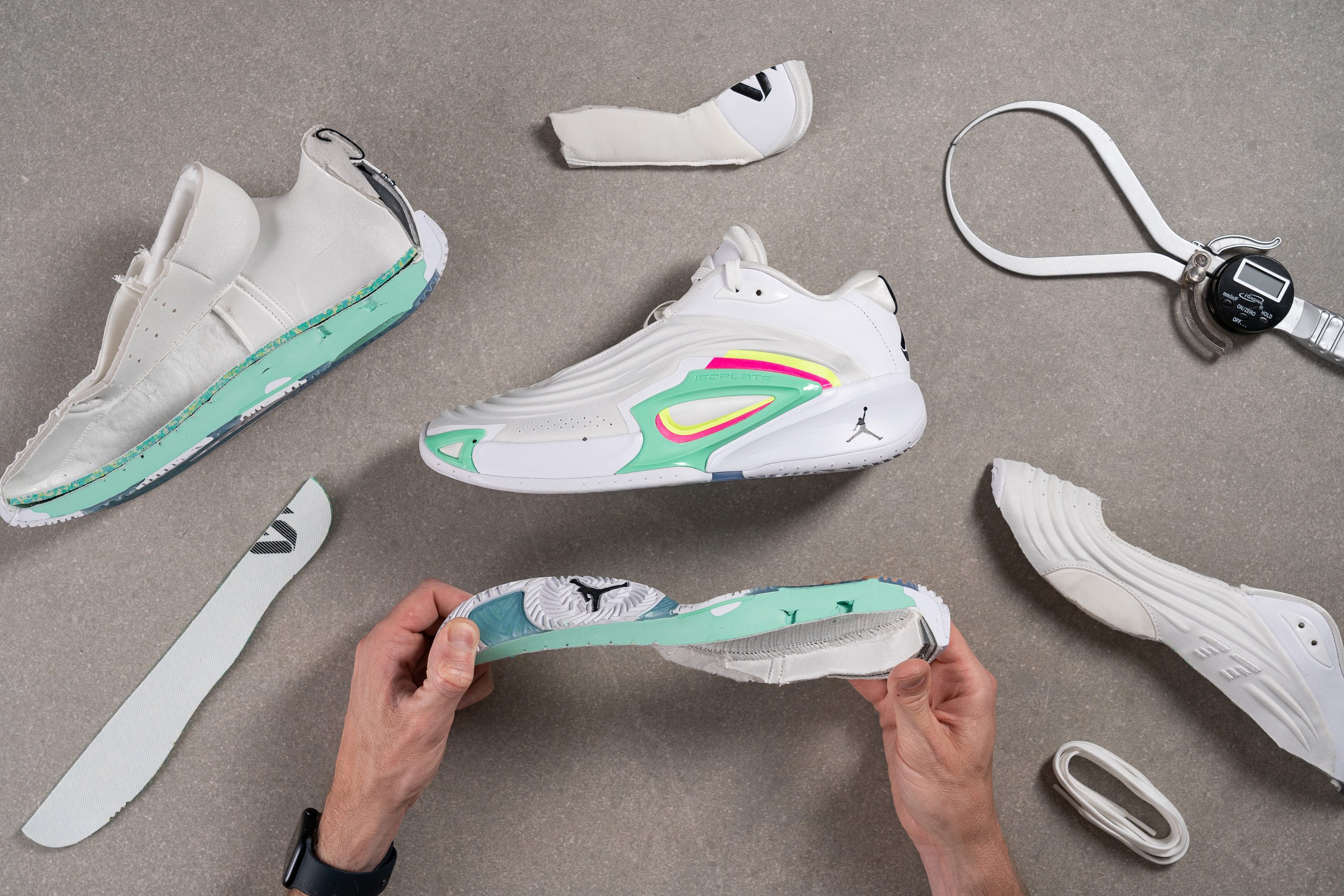
Cushioning
Shock absorption
Intended for shifty players who choose court feel over abundant cushioning, we weren't surprised that the Luka 3 returned below-average shock absorption scores.
With 98 SA in the heel and 73 SA in the forefoot, it offers just enough impact protection to soften the blow of hard landings while keeping you quick on your feet.
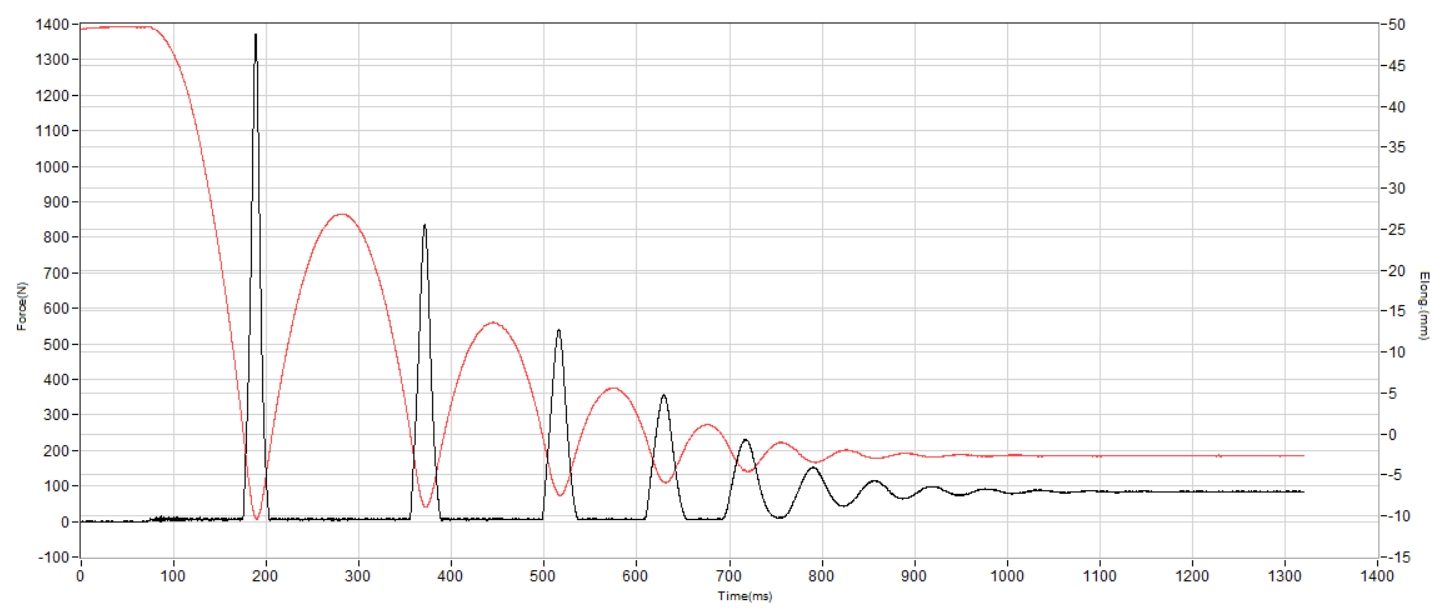
| Luka 3 | 98 SA |
| Average | 103 SA |
Energy return
The shoe's full-length Cushlon 3.0 foam showed some responsiveness but not enough to call it propulsive.
We found its energy return to be on par with the average of basketball shoes at 55.4% in the heel and 59.5% in the forefoot. It is dynamic enough to encourage quick toe-offs and drives but not so explosive for vertical jumps.
| Luka 3 | 59.5% |
| Average | 62.1% |
Heel stack
In our playtests, we could experience how the Luka 3 let us feel the court under our feet. This translated into better movement control and accuracy, as there wasn't a massive chunk of foam making us lose precision or adding a disrupting bit of instability.
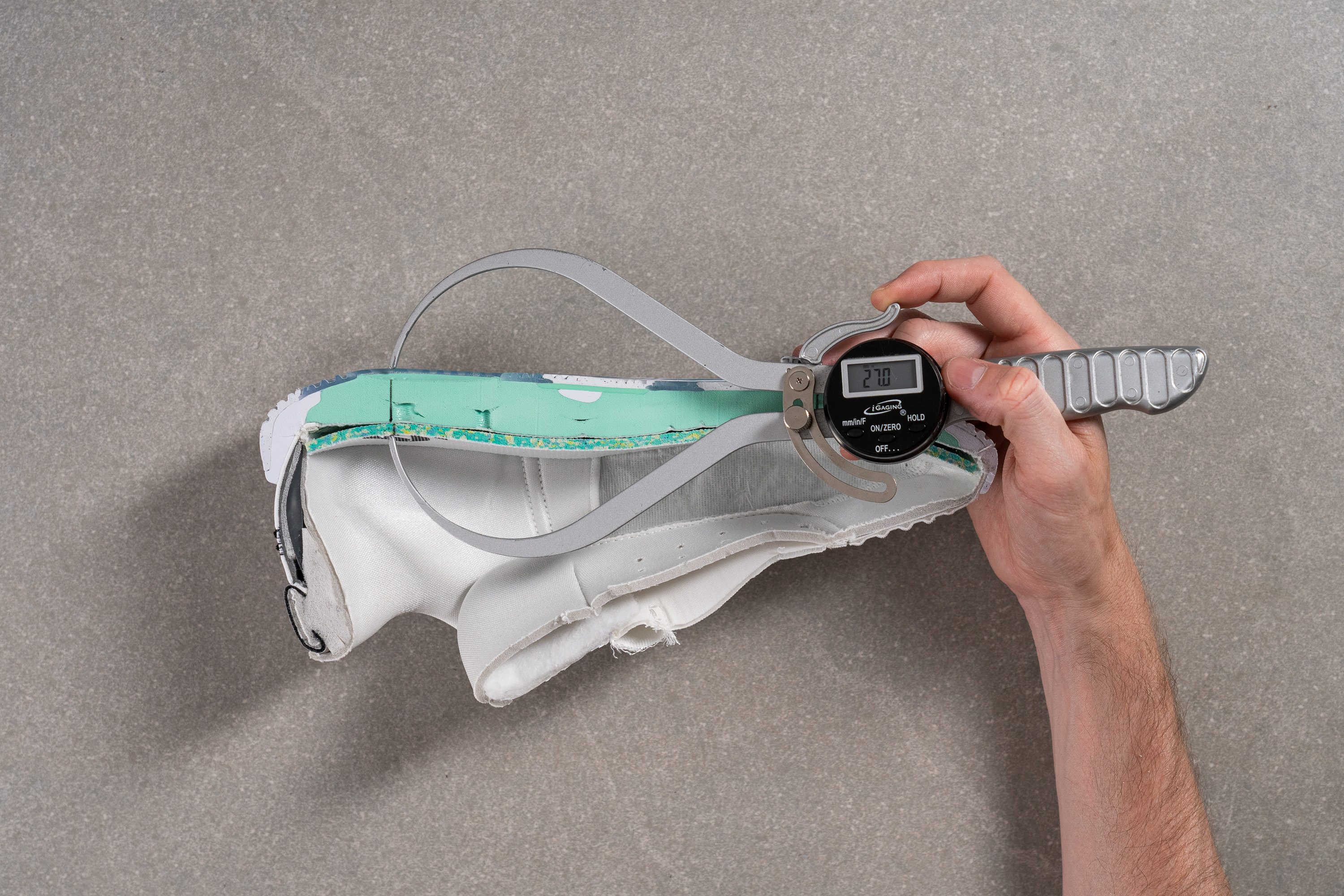
When we took this shoe to our lab and measured its heel stack, our calliper returned 27.0 mm. The result caught us nodding, as a score below the average was totally in sync with what we felt during our wear tests.
| Luka 3 | 27.0 mm |
| Average | 28.8 mm |
Forefoot stack
We had a similar feeling with the forefoot. At 20.9 mm, our calliper indicated it's also lower than average, which paired just right with the court feel we got from the Luka 3.
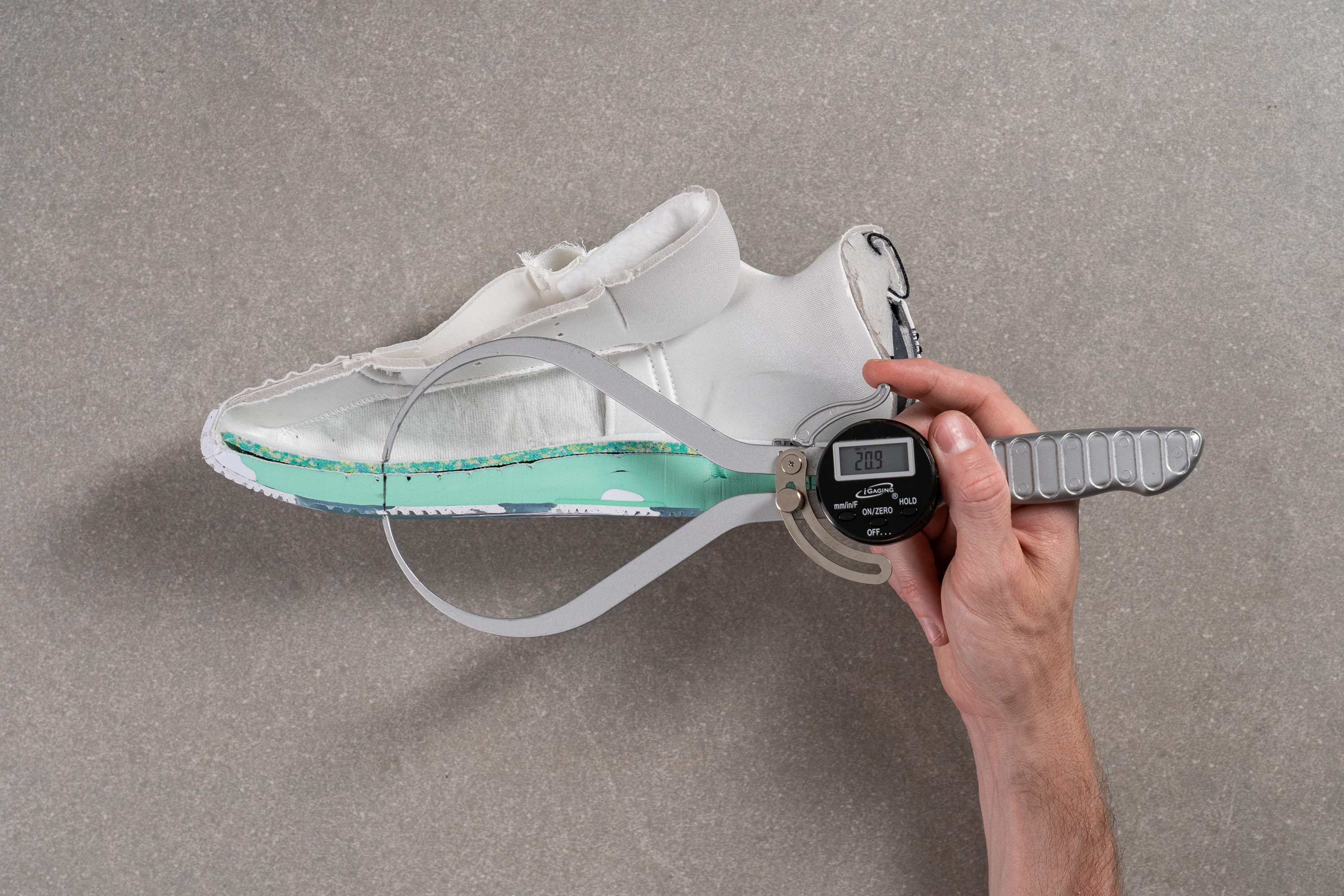
Just like we explained with the heel stack, this closer-to-the-ground structure let us perform specific moves more accurately; like wraparounds, for example. In order to get the most out of that move, we also need a higher-than-average traction level.
But hey, no spoilers! We'll talk about grip on its own section.
| Luka 3 | 20.9 mm |
| Average | 21.4 mm |
Drop
After measuring the Luka 3's heel and forefoot heights, we can calculate its drop. At 6.1 mm, it felt standard on foot, so we didn't have to get used to it or anything like that.

| Luka 3 | 6.1 mm |
| Average | 7.4 mm |
Midsole softness
When we cut shoes in half, we get full access to their midsole. This is really important, as the softness of such material can only be measured by making direct contact with it.
So, even though sometimes it feels like we could just measure it from the outside, there might be a protective layer around (as it's pretty weak) that gives us an inaccurate result.
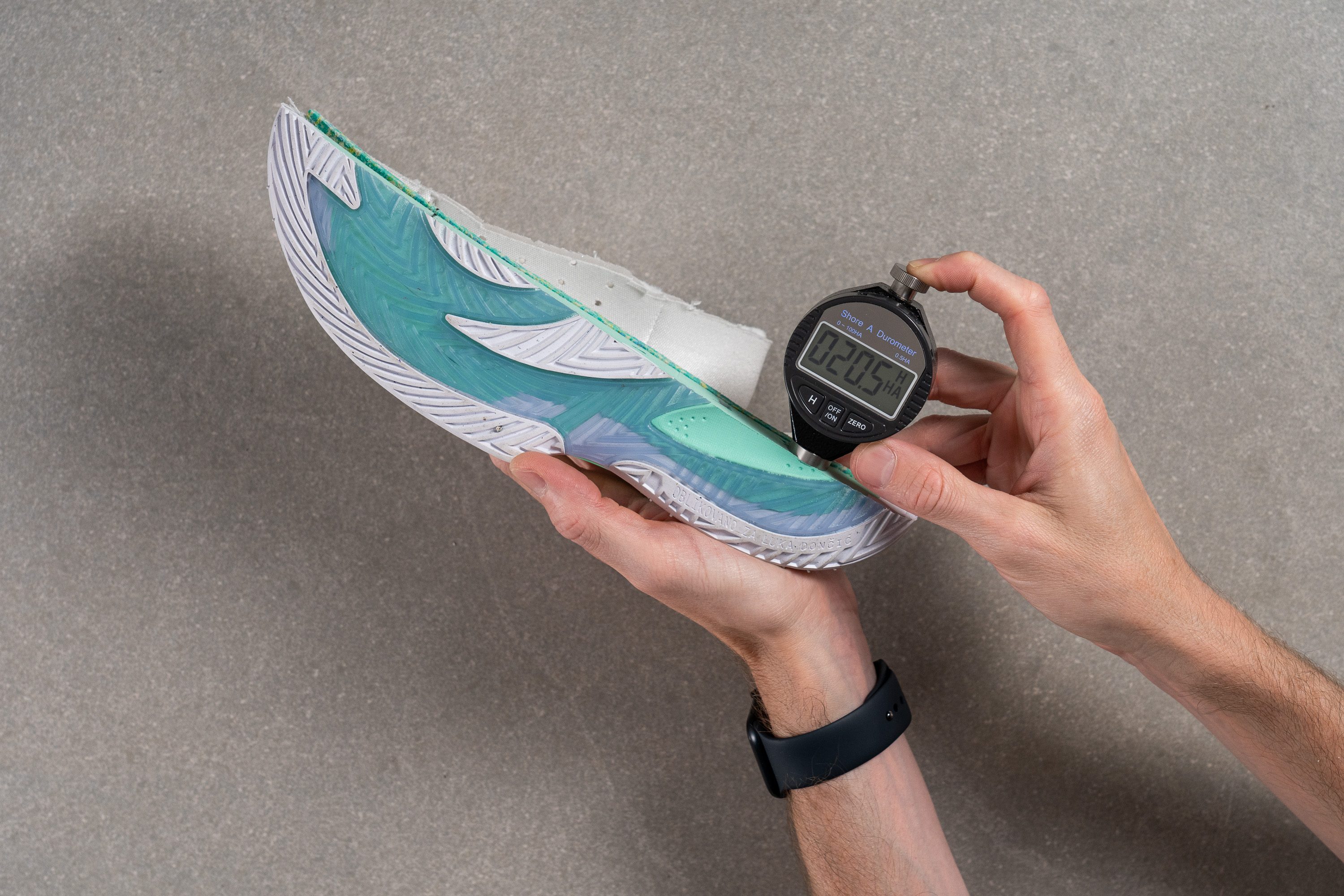
In this case, at 20.5 HA, the Cushlon 3.0 is softer than average. After playing some ball with this shoe, it's exactly what we expected. We had a soft feel underfoot every single game, and even though the Cushlon 3.0 isn't the most durable foam out there (and it might bottom out earlier than you'd want), we still enjoyed our hoops to the max.
| Luka 3 | 20.5 HA |
| Average | 24.3 HA |
Secondary foam softness
Big-toed hoopers, it's time for you to celebrate: the toebox width at the big toe of the Luka 3 stands proudly at 82.4 mm!
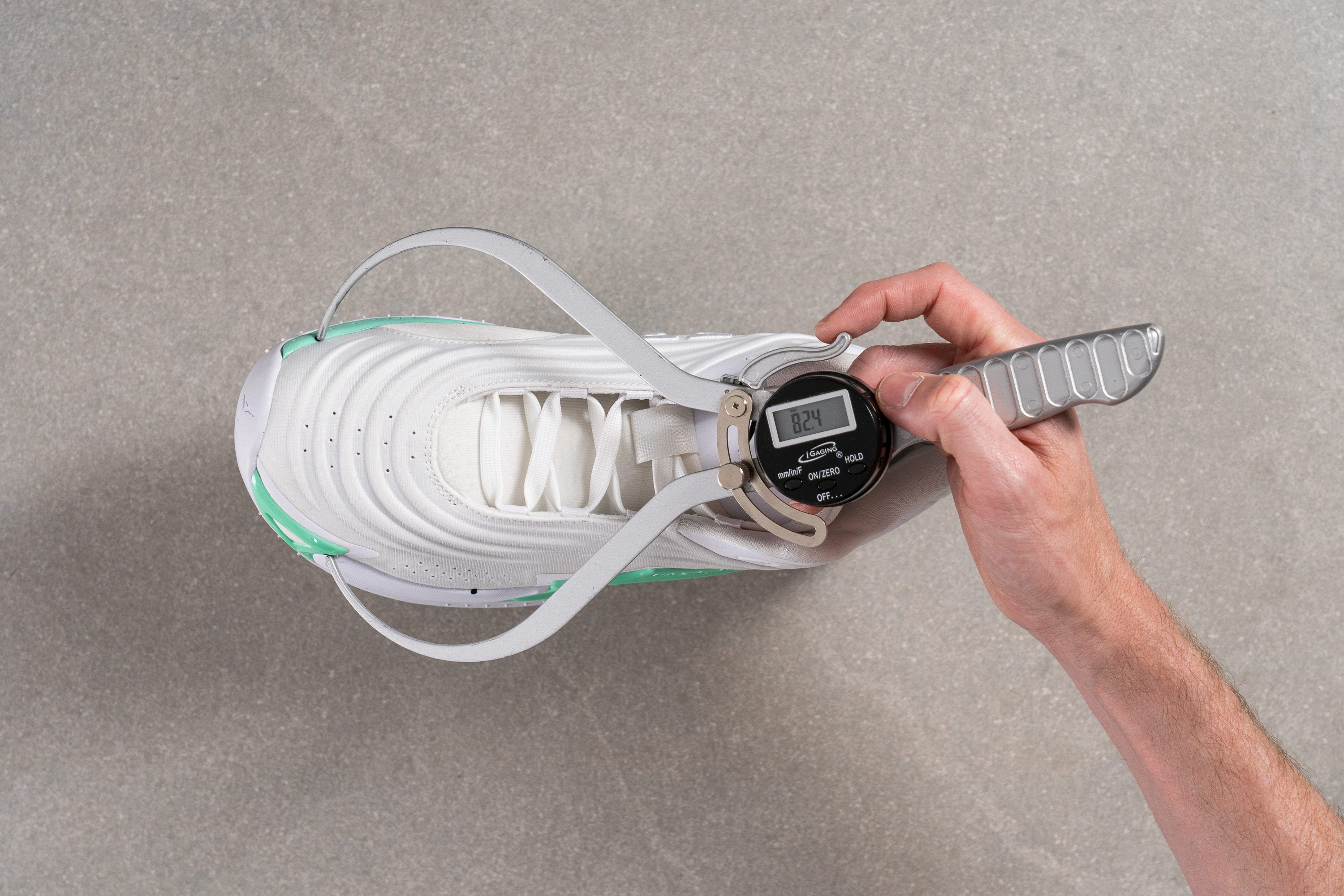
Our standard-sized feet felt happy and comfy in this shoe, and our toes had plenty of space to spread freely in our landings.

Size and fit
Size
Jordan Luka 3 fits half size small (84 votes).
Consider sizing up
Width / Fit
At 96.6 mm in the metatarsal area, the Luka 3's fit is significantly wider than the average and we love it!
In our opinion, the extra space matches the shoe's stiffened-up build really well, as it helped our foot sit comfortably throughout the break-in period.
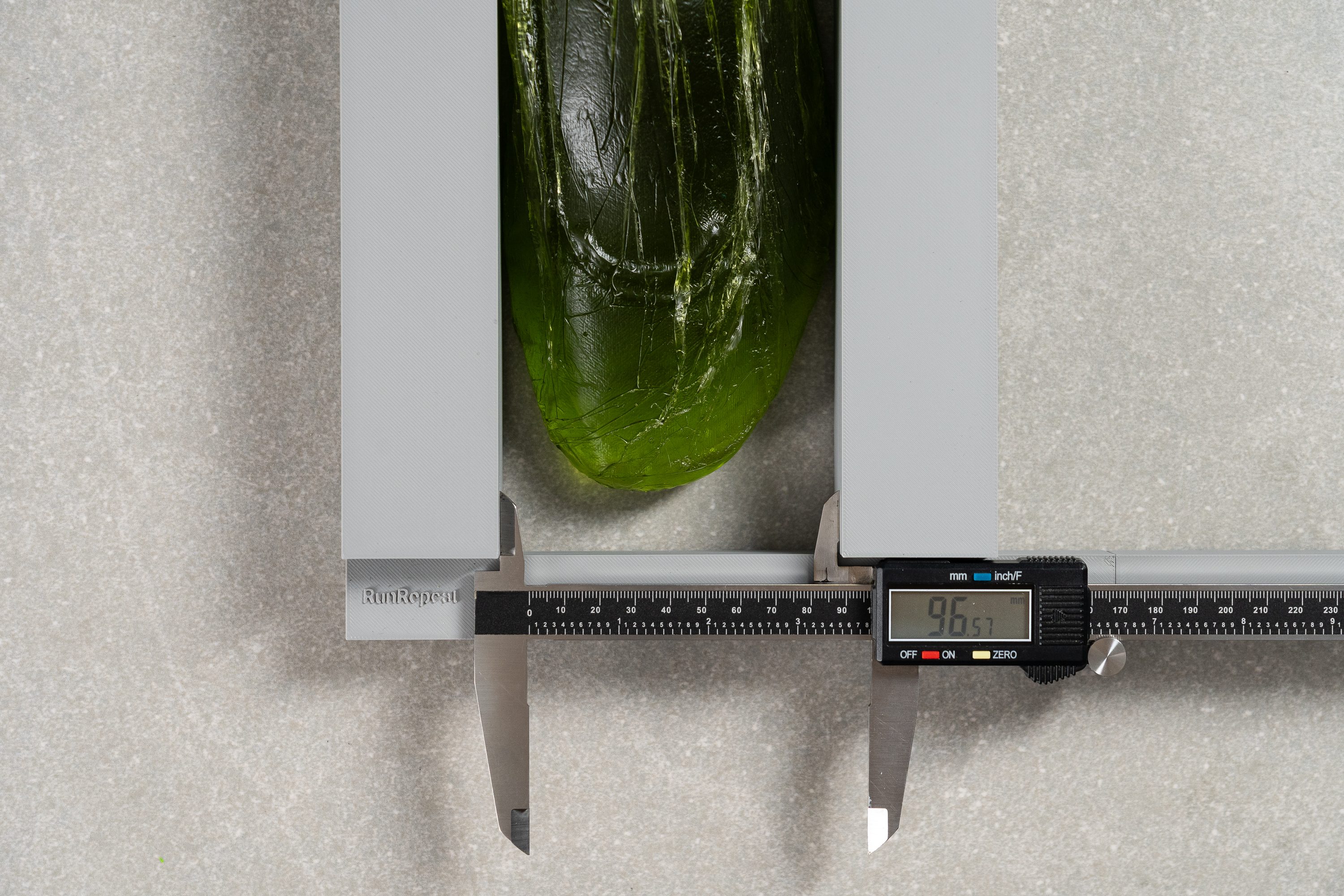
| Luka 3 | 96.6 mm |
| Average | 92.8 mm |
Toebox width
Big-toed hoopers, it's time for you to celebrate: the toebox width at the big toe of the Luka 3 stands proudly at 70.4 mm!
Our standard-sized feet felt happy and comfy in this shoe, and our toes had plenty of space to spread freely in our landings.
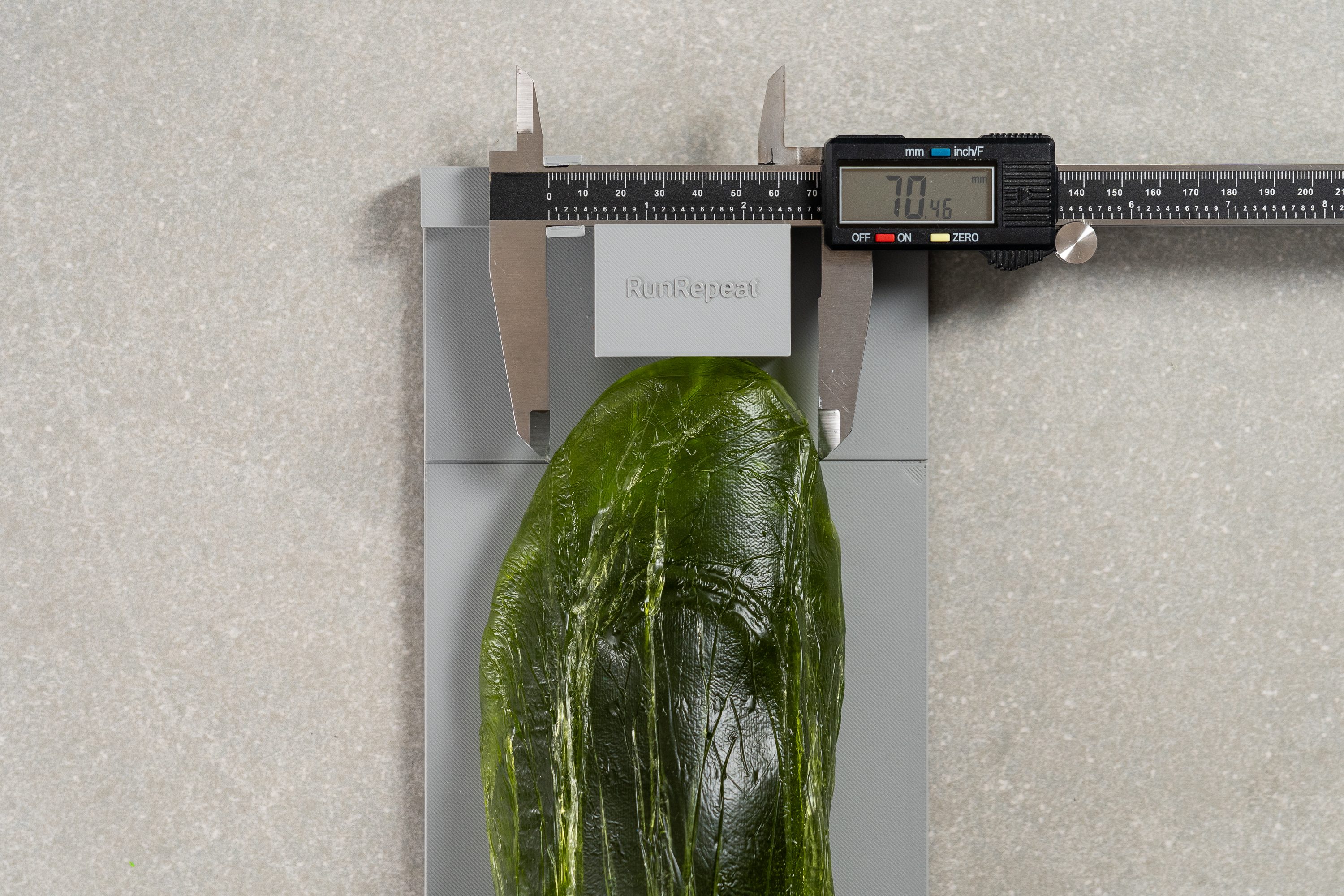
| Luka 3 | 70.4 mm |
| Average | 69.3 mm |
Toebox height
This Jordan shoe doesn't skimp on vertical space either. With a typical toebox height of 22.4 mm, it shuld not aggravate any toenail concerns.
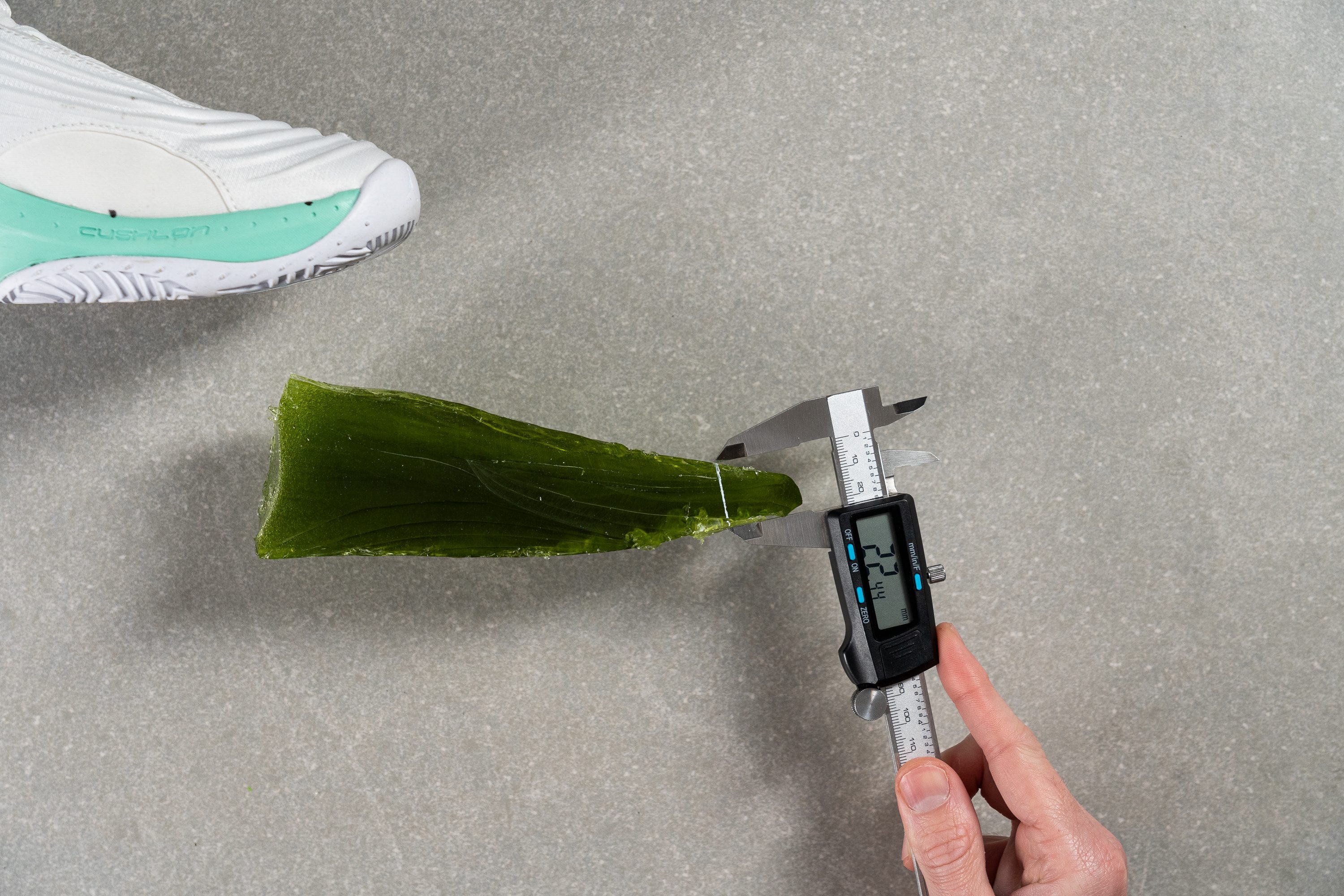
| Luka 3 | 22.4 mm |
| Average | 23.5 mm |
Traction / Grip
So we're finally in what we believe is the best feature of this shoe: its traction.
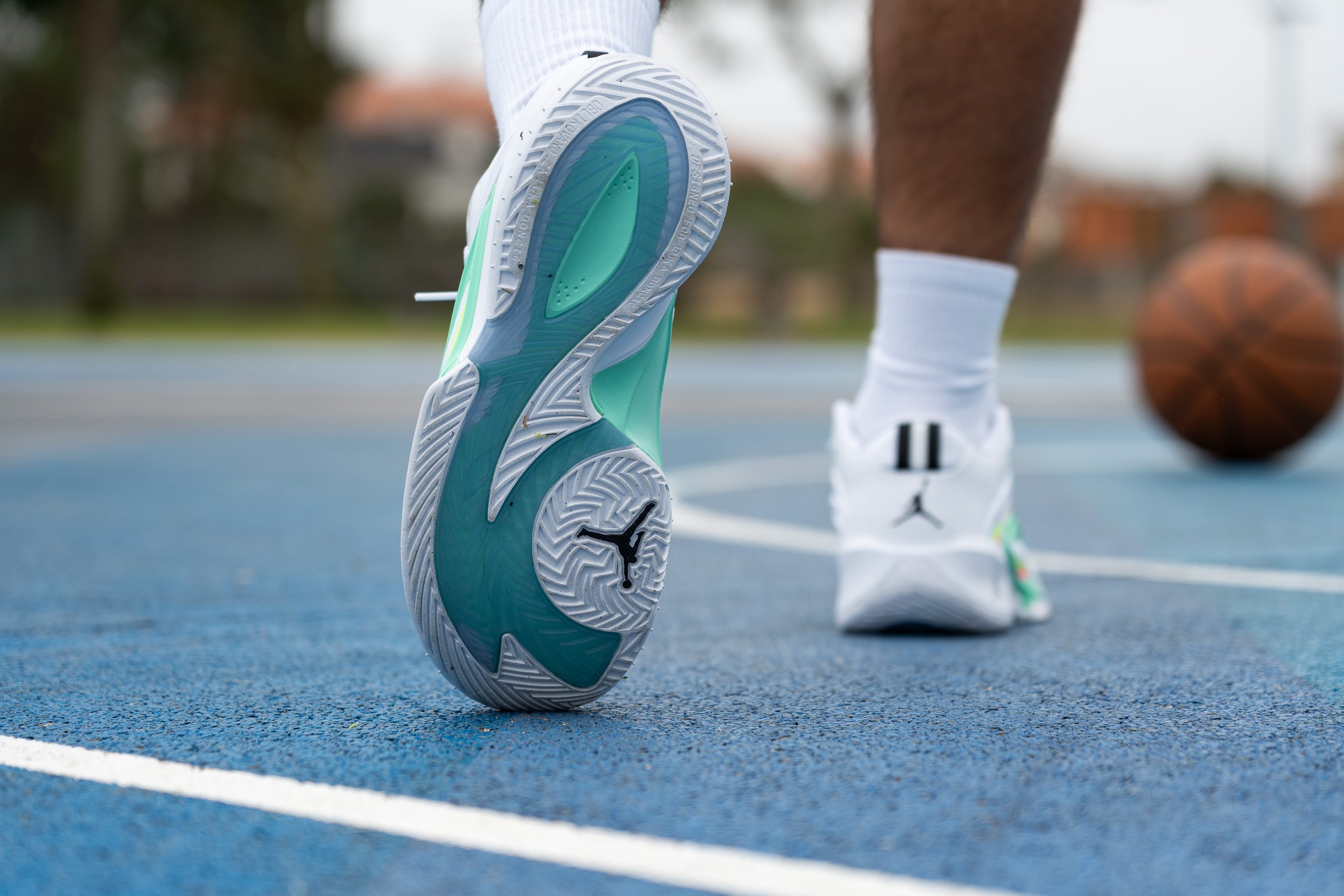
As you can see, the Luka 3 shows a herringbone pattern in white with some translucent rubber on top just in some parts. It also includes a Jumpman logo in the ball of the foot and a wide opening at the heel.
Apart from finding its aesthetics absolutely wonderful, we also really liked the way this shoe performed traction-wise in every single court. Yes, when we say "every single court", we mean it. The Luka 3 bit every surface like pretty much no shoe had ever before. Even if the court was dusty and we had to wipe the outsole a couple of times with our hands, it just wouldn't give up.
What's more, it's not that the Luka 3's grip is simply solid, it's also consistent! We really enjoyed playing in this shoe during our wear tests, as its containment and grip boosted our confidence all the way up. The sky is the limit!
Forefoot traction
Testing the Luka 3's gripping capacity on a clean and polished court surface, we recorded a great friction score of 0.77. This translates into consistent traction for dynamic and explosive moves on the indoor court.
| Luka 3 | 0.77 |
| Average | 0.75 |
Outsole design
The Luka 3 mixes two types of rubber for the outsole. The hard rubber area features a radial herringbone pattern to provide the shoe's primary traction.
Meanwhile, translucent rubber covers the central area. It helps to make the shoe a bit lighter and more pliable than it would be with a full-length hard rubber outsole.
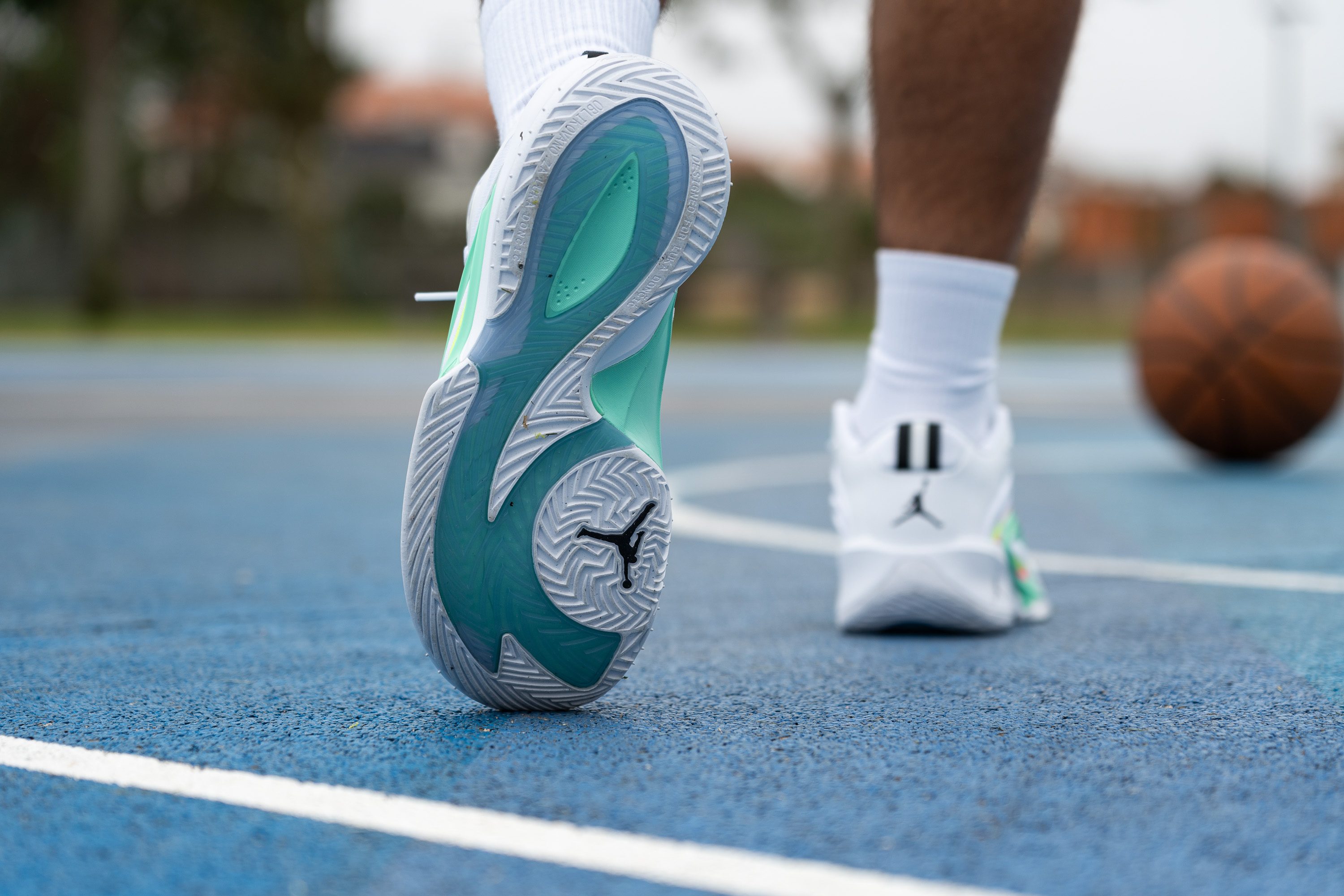
Flexibility / Stiffness
At 18.7N, the Luka 3 turned out to be slightly more forgiving than average.
Our feet noticed this after a couple of games, when the shoe started to break in. This added flexibility helped us with fake moves a lot, as we could go back to our natural position after tricking our defender.
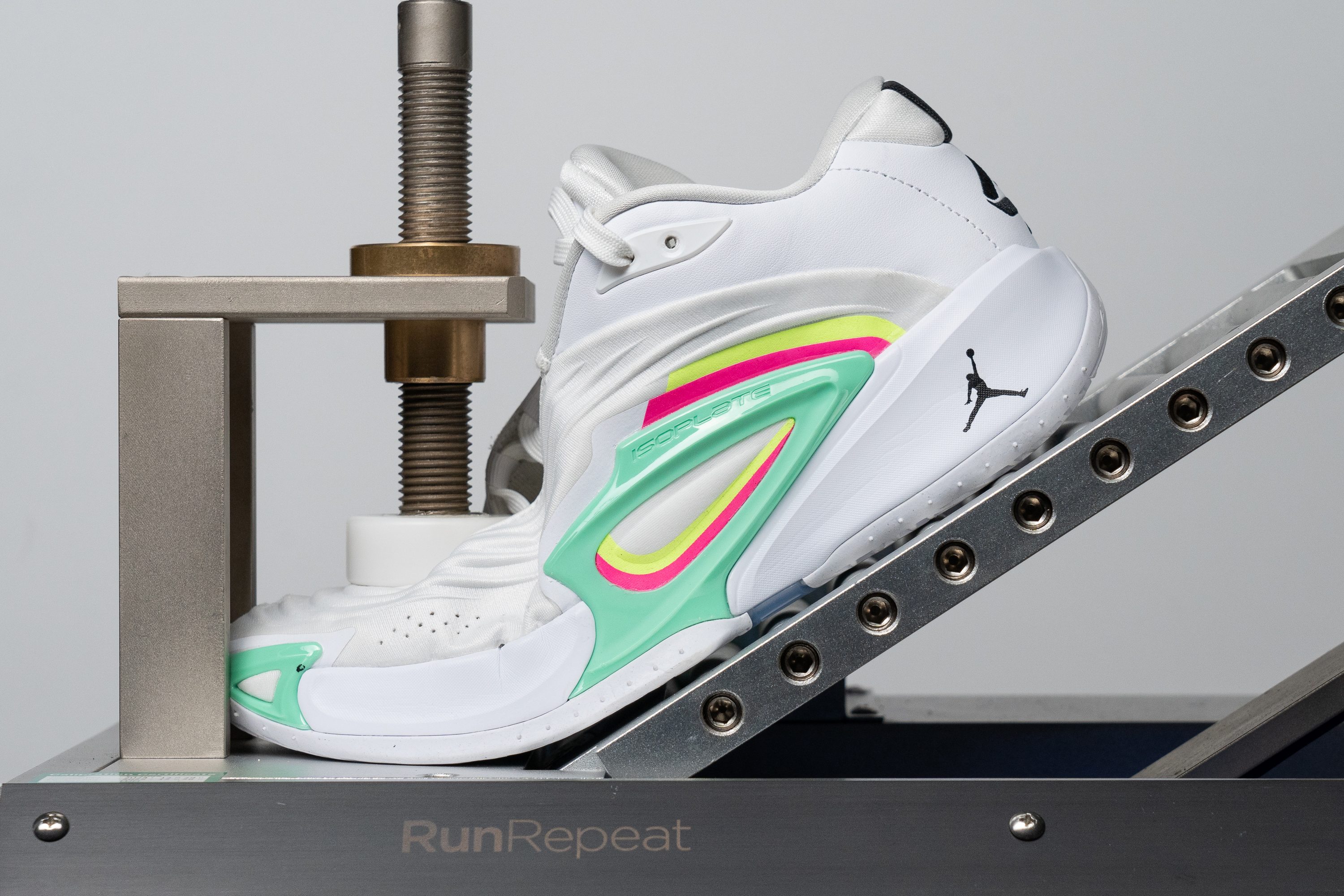
| Luka 3 | 18.7N |
| Average | 20.5N |
Weight
Talking about weight... it wasn't like this shoe felt like a brick for our feet, but we thought the brand would try to go back to the Luka 1's weight (12.8 oz/363g) after the heavy Luka 2 (14.50 oz/411g).
Our scale indicated the Luka 3 stands at a solid 13.5 oz/384.0 g, which is an improvement if we compare it with the previous iteration, as it's now lighter than average.
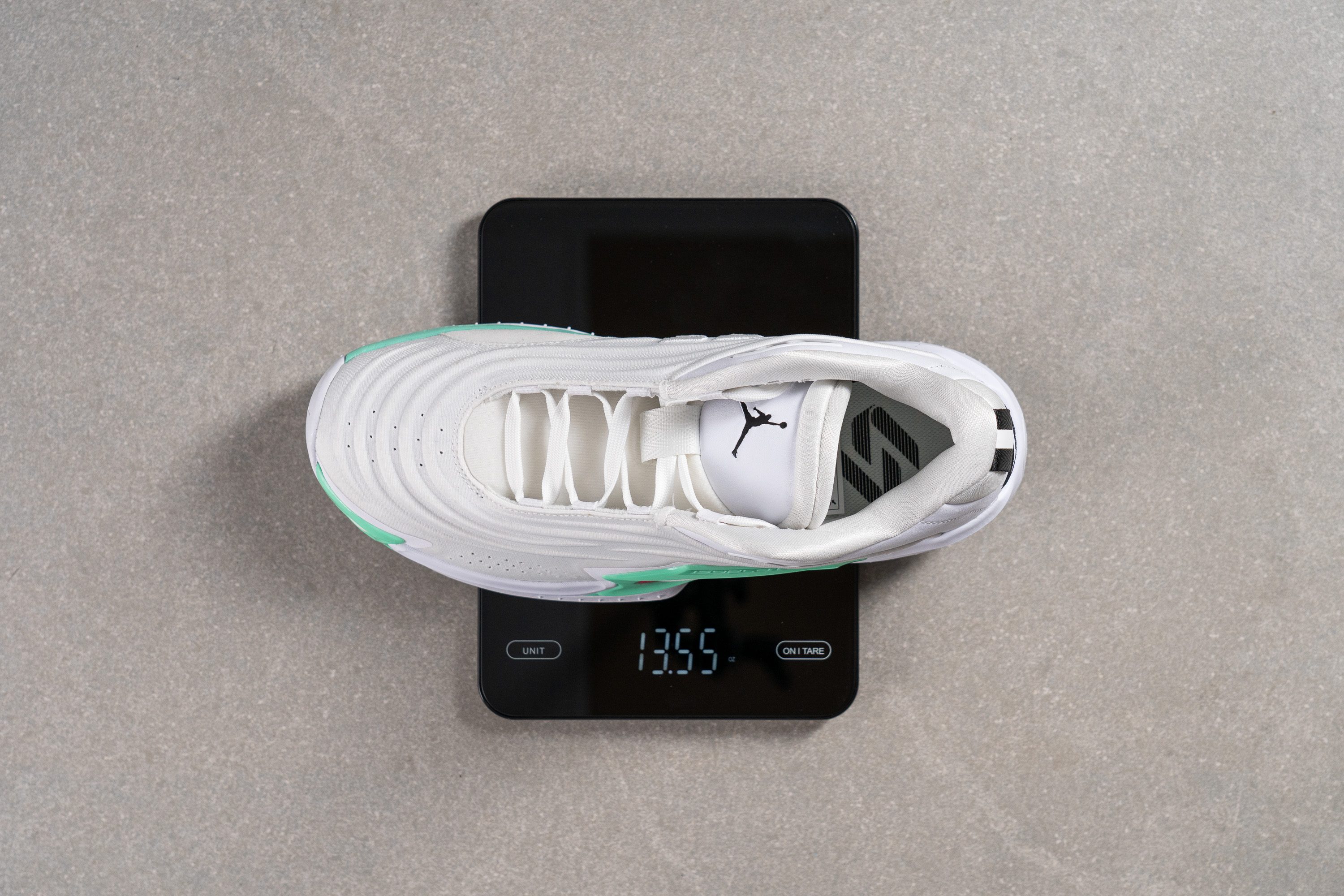
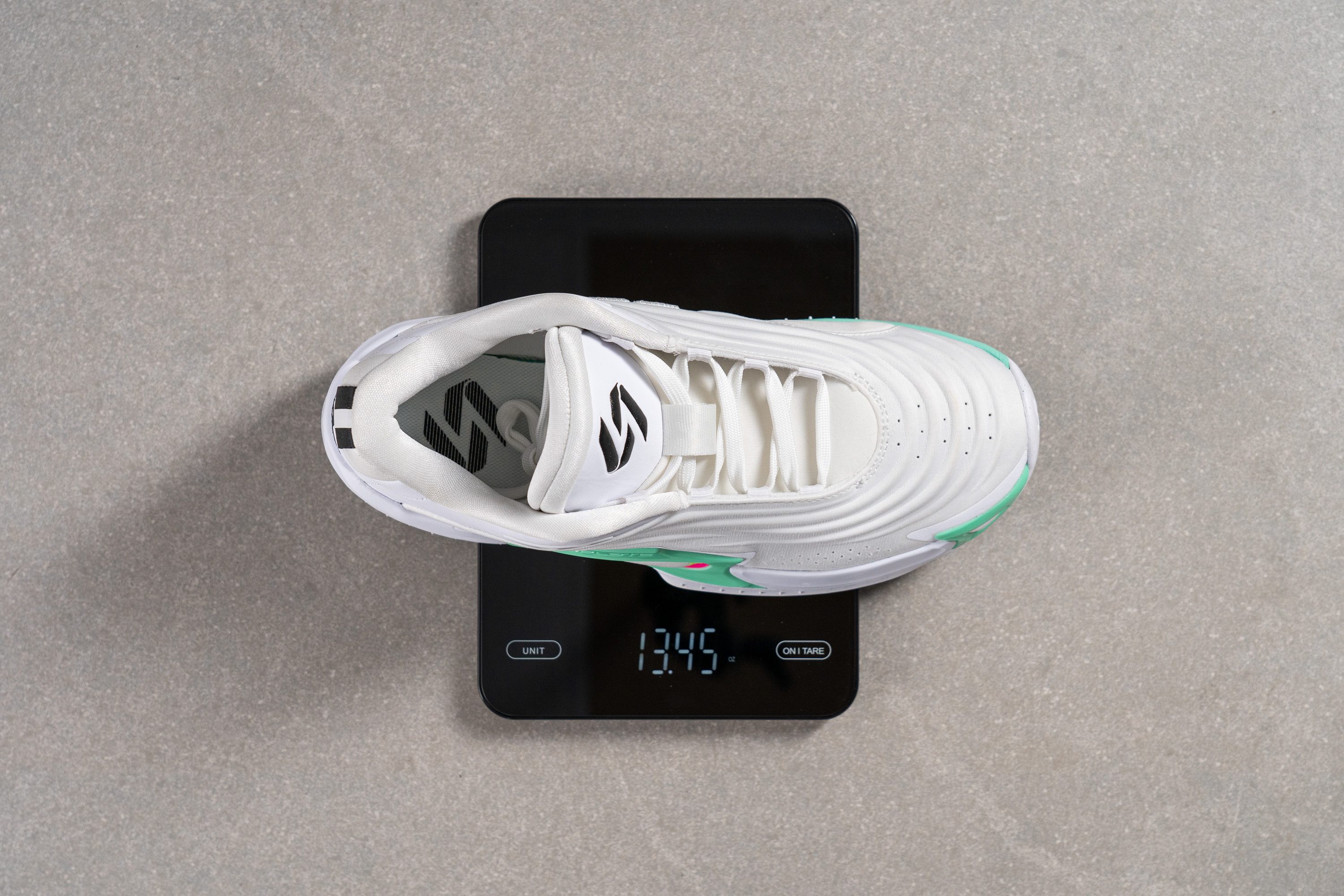
During our wear tests, we felt pretty good on the court, and we could easily go for quick moves. The lighter-than-average nature of this Jordan pair teamed up with its solid structure to give us a confidence boost that maxed up our performance.
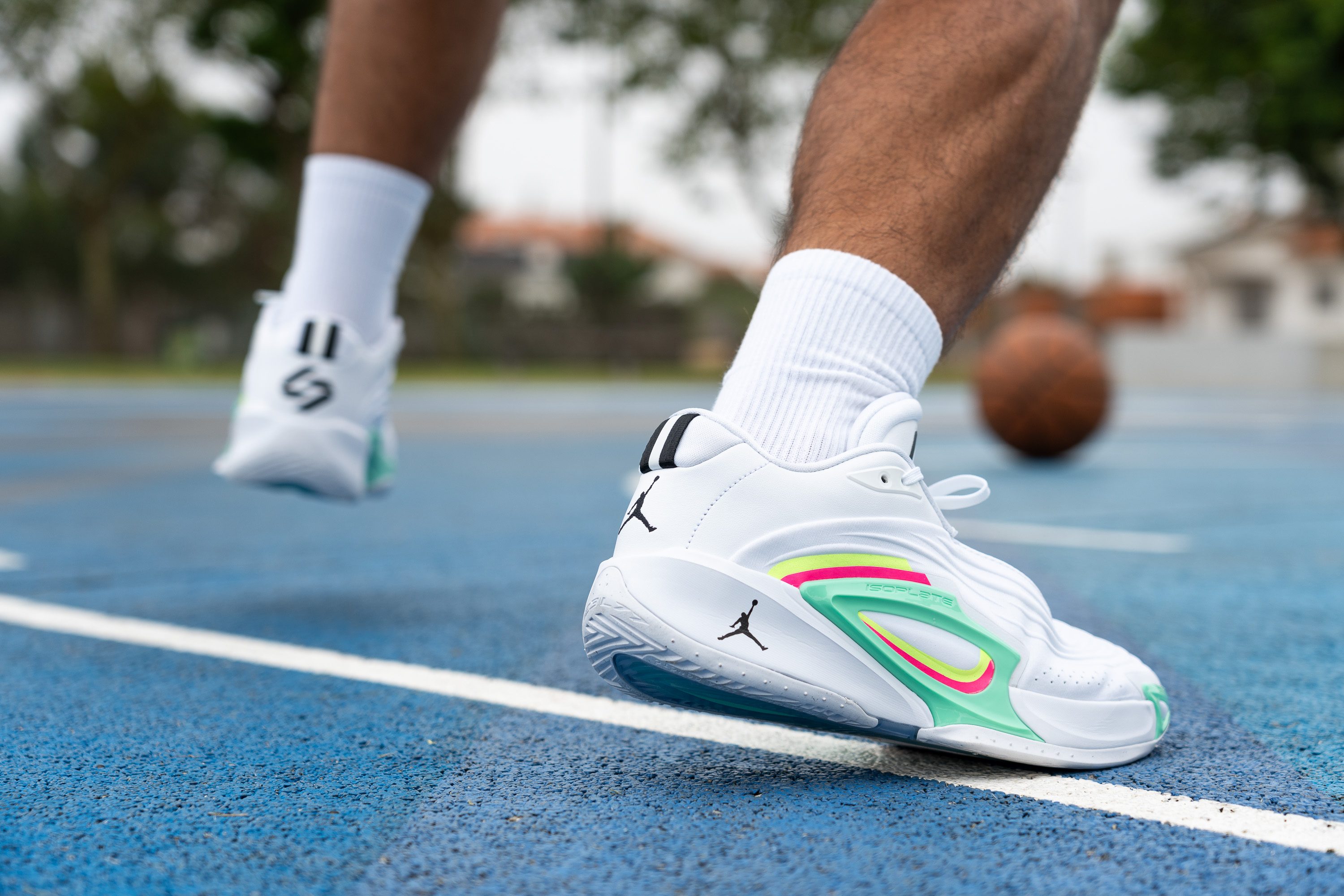
| Luka 3 | 13.5 oz (384g) |
| Average | 13.8 oz (391g) |
Breathability
When we saw the Luka 3's tough build, we already imagined it wouldn't be the most breathable shoe.
As you can see in the video, most of the smoke comes out from the tongue; but it pales in comparison with the results the Curry 10 showed us. The 5/5 this UA model earned is pretty clear when we see its whole structure working together to evacuate the smoke. On the other hand, the Luka 3... is doing its best, and it got a solid 3/5. Still, we were pretty surprised when we saw the toebox letting out smoke just like a train!
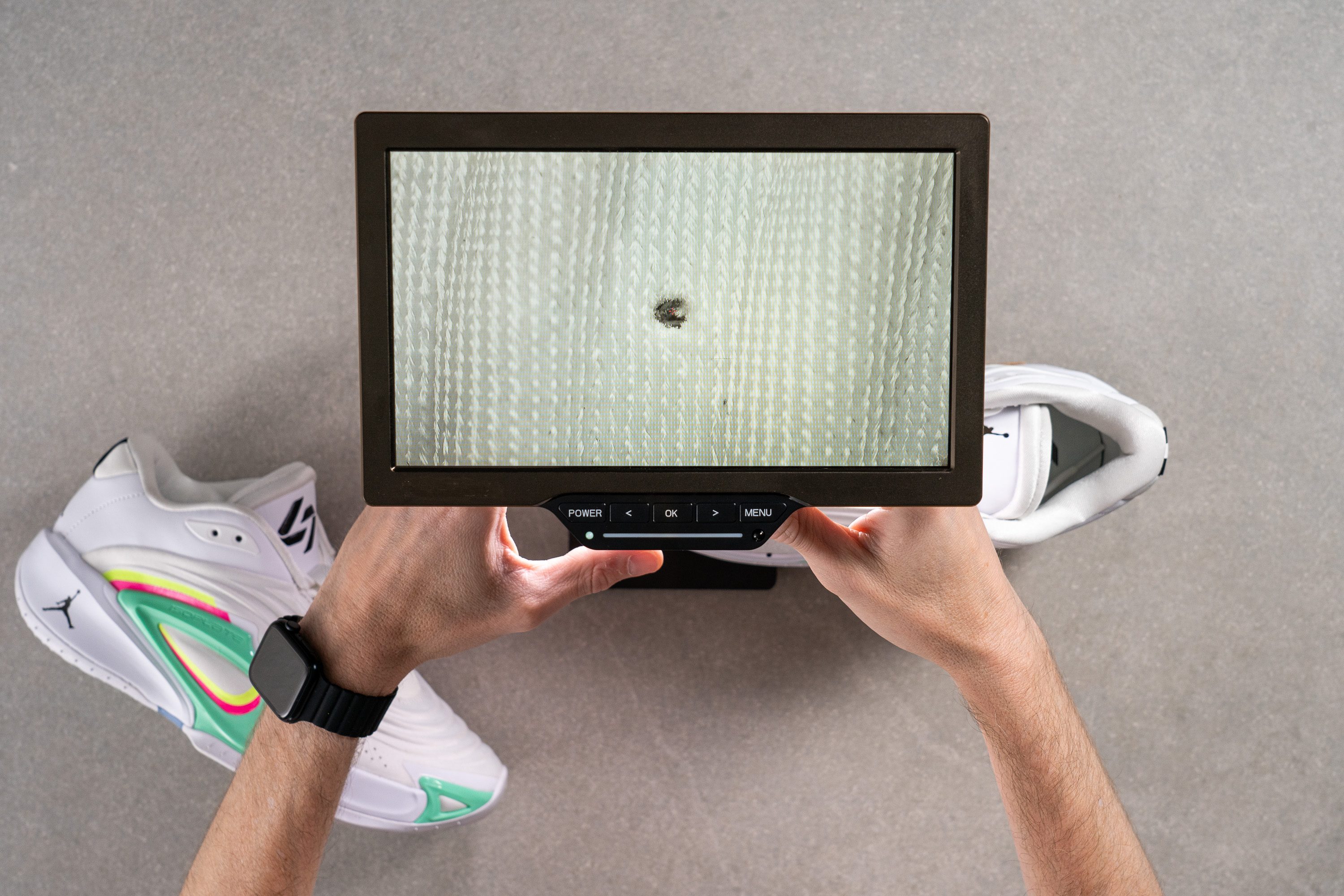
Our microscope was quick to explain why. This Jordan has small ventilation holes at the top of the forefoot and on the sides. There aren't many of them, though, but they seem to work pretty well!
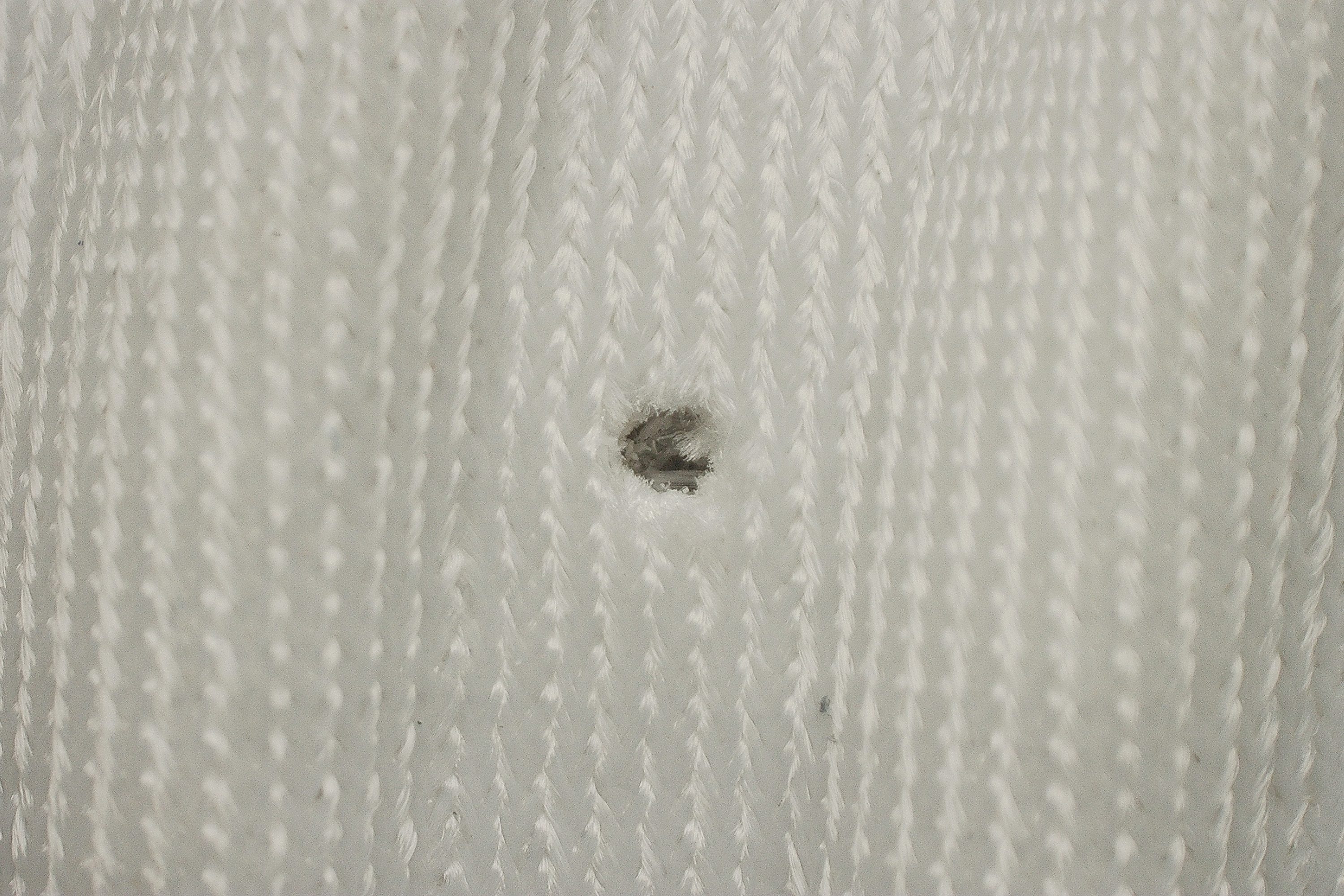
Who would have guessed that tiny detail is not some mere decoration? It was even hard to see in our light test!
| Luka 3 | 3 |
| Average | 2.5 |
Stability
Lateral stability test
We felt pretty confident during our wear tests with the Luka 3. The shoe's structure is supportive overall, and it features not only a sole flare, but also a wonderful IsoPlate detail. As you can see in the video below, our ankles didn't have a chance to play around!
The flare did its part too, providing us with a wider base for stable landings after our jumps. If you're an inside player or you like to focus on rebounding, we believe this structure is going to come in handy. Why? Well, because every time you collide with another player mid-air, the flare will make sure your unstabilized landings are not that bad.

As we've mentioned before, we also have the IsoPlate, which is a framing structure that we can find on the outer side of the Luka 3. It improves foot containment and adds lateral stability, which are already 2 wonderful key points for a basketball shoe. But the best part of this specific detail is that its structure spreads all around the forefoot.

We do believe this added an extra pop that worked hand in hand with the shock absorption of the Cushlon 3.0 foam. Which is a great combination, if you ask us!
Torsional rigidity
The surefootedness we felt was not only because of the IsoPlate, though! When we took the Luka 3 to our lab and performed our torsional rigidity test... the shoe was about to break our phalanges!
You can see it clearly in the video, we were trying our best to bend it! But it just wouldn't give in, which made us give it a solid 5/5 on our torsional rigidity test. There's not a higher grade... maybe we should add a "bricklike" category for shoes like this?
Jokes aside, the high rigidity of the materials of this shoe offered us wonderful foot containment and stability. The only downside is that the Luka 3 needed a break-in period to give us all the comfort it had stored for us. It wasn't too hard or painful, and it definitely went by way more easily than the Luka 1's. OH MY GOSH now that was a brick!
| Luka 3 | 5 |
| Average | 4.5 |
Heel counter stiffness
The Luka 3's heel is here to give us good news once again! When we tried to bend it, it didn't give in for a single second, look.
Its stiff upper gave us a lot of confidence when we played ball, as it offered great heel support. Its unmovable structure is complimented by the incredibly thick heel counter, which made sure our Achilles was safe and sound.
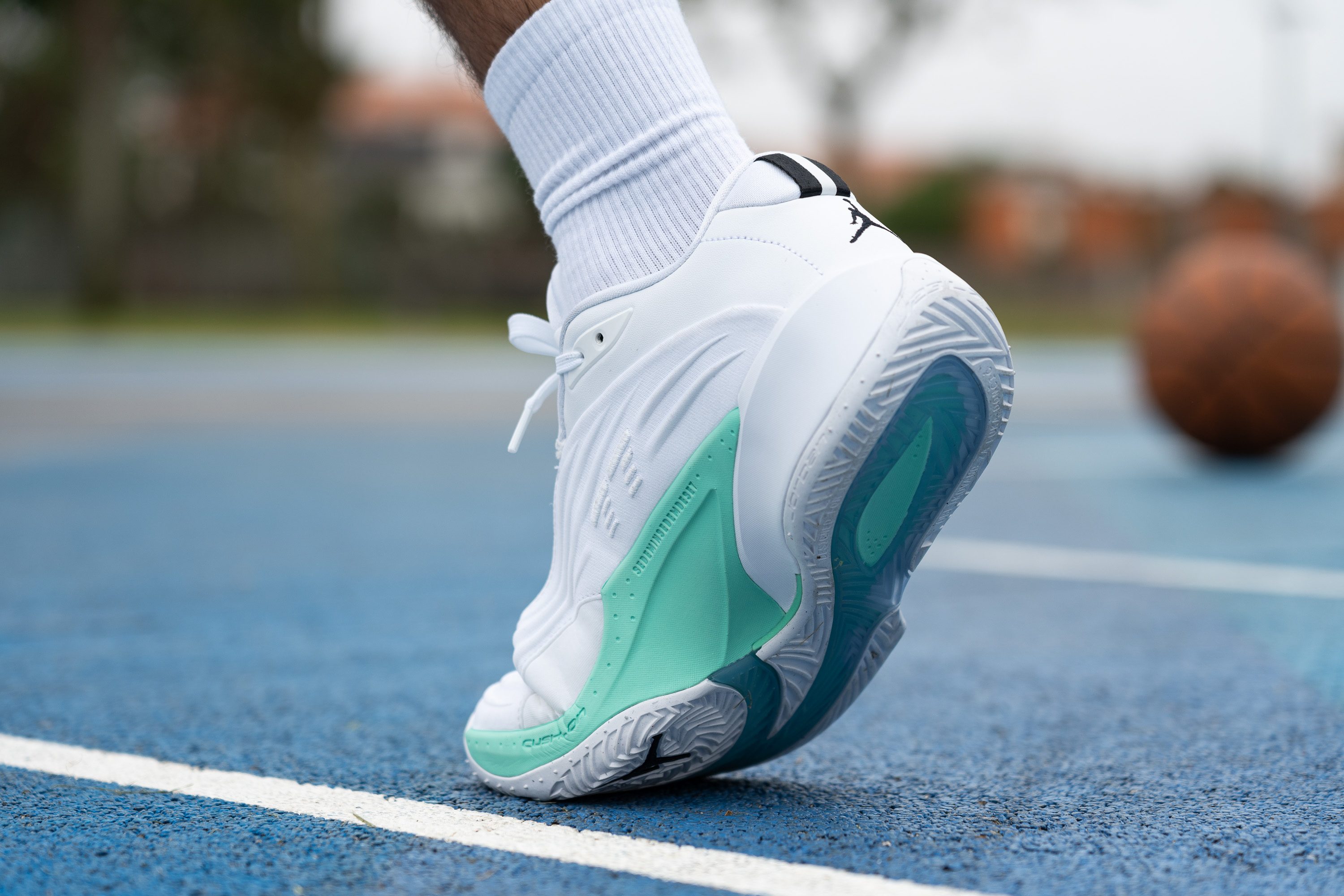
Oh, also, heel slippage was clearly out of the question!
| Luka 3 | 5 |
| Average | 3.8 |
Midsole width - forefoot
With a wider base and a sole flare, the Luka 3 stood at 117.3 mm when we measured its midsole width in the forefoot with our calliper.

Apart from the stability provided by both features, we also want to talk about the slight protuberance that protected our toes from abrasion.
As you can see, there are some dribble moves where us, hoopers, inevitably rub the inner side of the toebox against the court. The surface might be more or less harsh, yet it still deals some damage to the shoe, which needs to be protected!
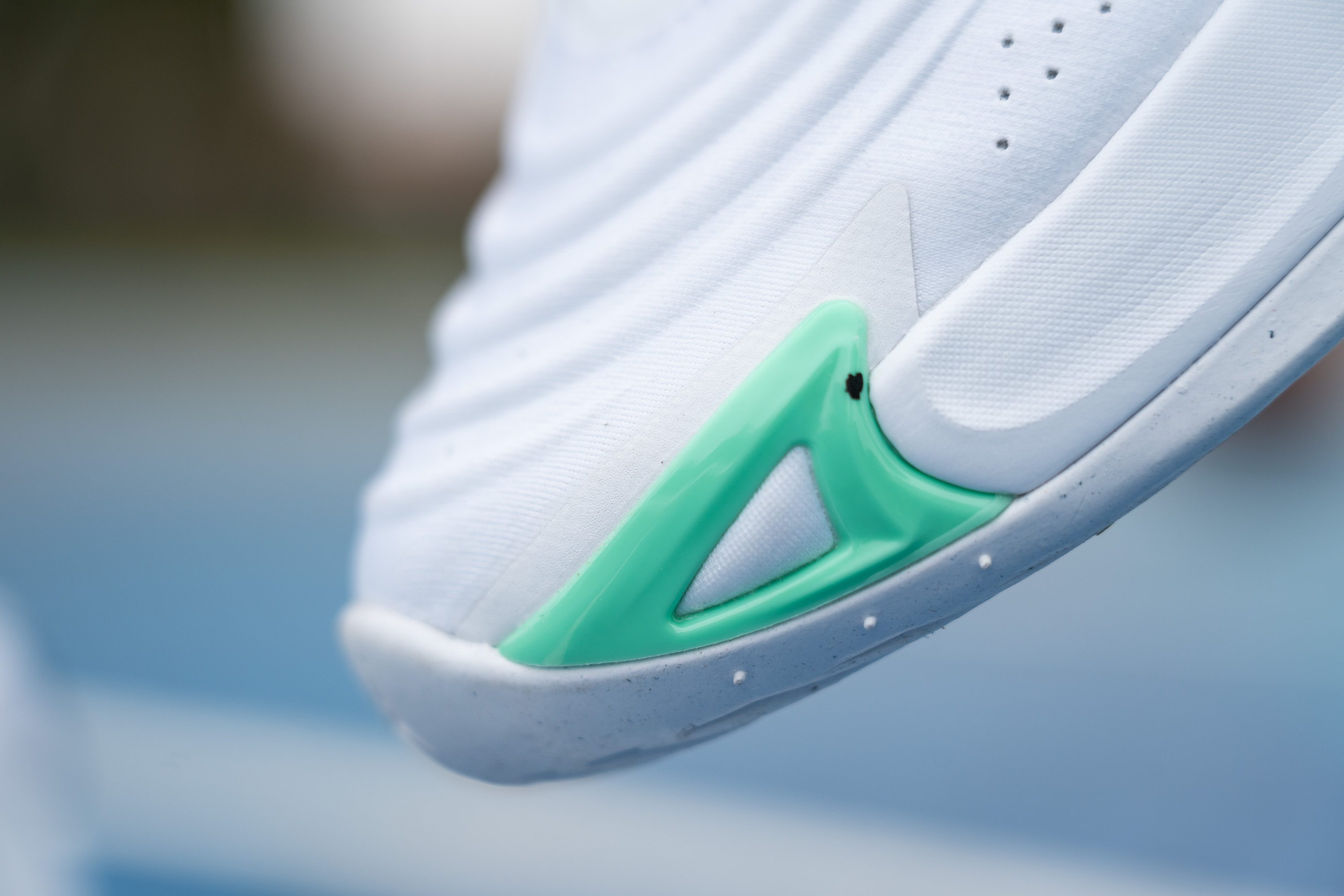
This protuberance right is shielding our toes on the outer side too, and we couldn't be more grateful! Nevertheless, just by looking at it we can tell the shoe's structure doesn't focus on this specific protection. The layer is not big, and on our Dremel test we checked the material wasn't the most durable around.
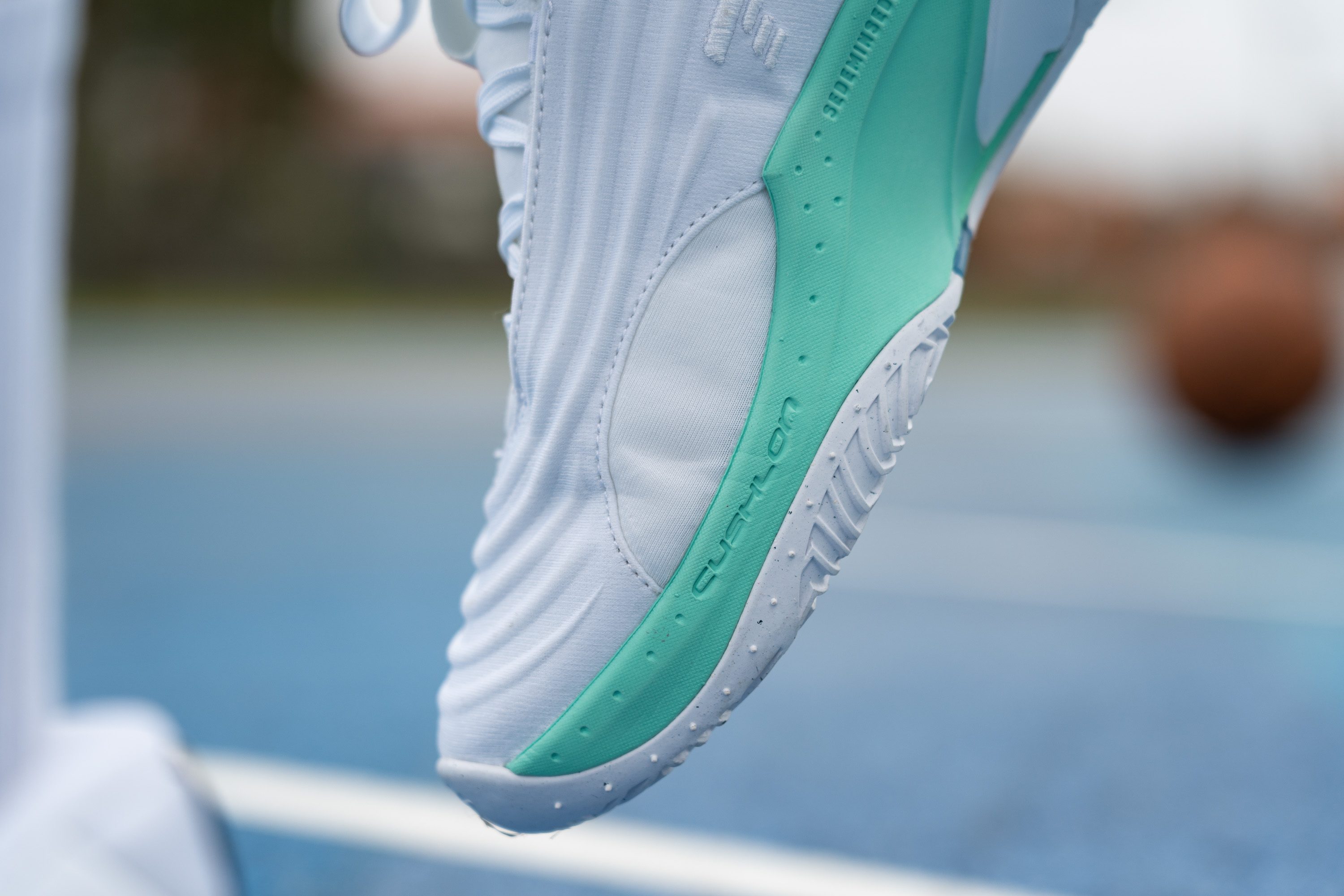
Also, the design of the shoe adds some kind of gap in the middle of the more solid structure of the upper. It might be for breathability reasons, or even to reduce the shoe's overall weight. Whatever it is, just make sure harsh surfaces don't have access to it, or they will obliterate it!
This is another reason why we wouldn't recommend anyone to play streetball constantly in the Luka 3.
| Luka 3 | 117.3 mm |
| Average | 114.8 mm |
Midsole width - heel
The midsole width in the heel is just average at 90.3 mm, according to our calliper.
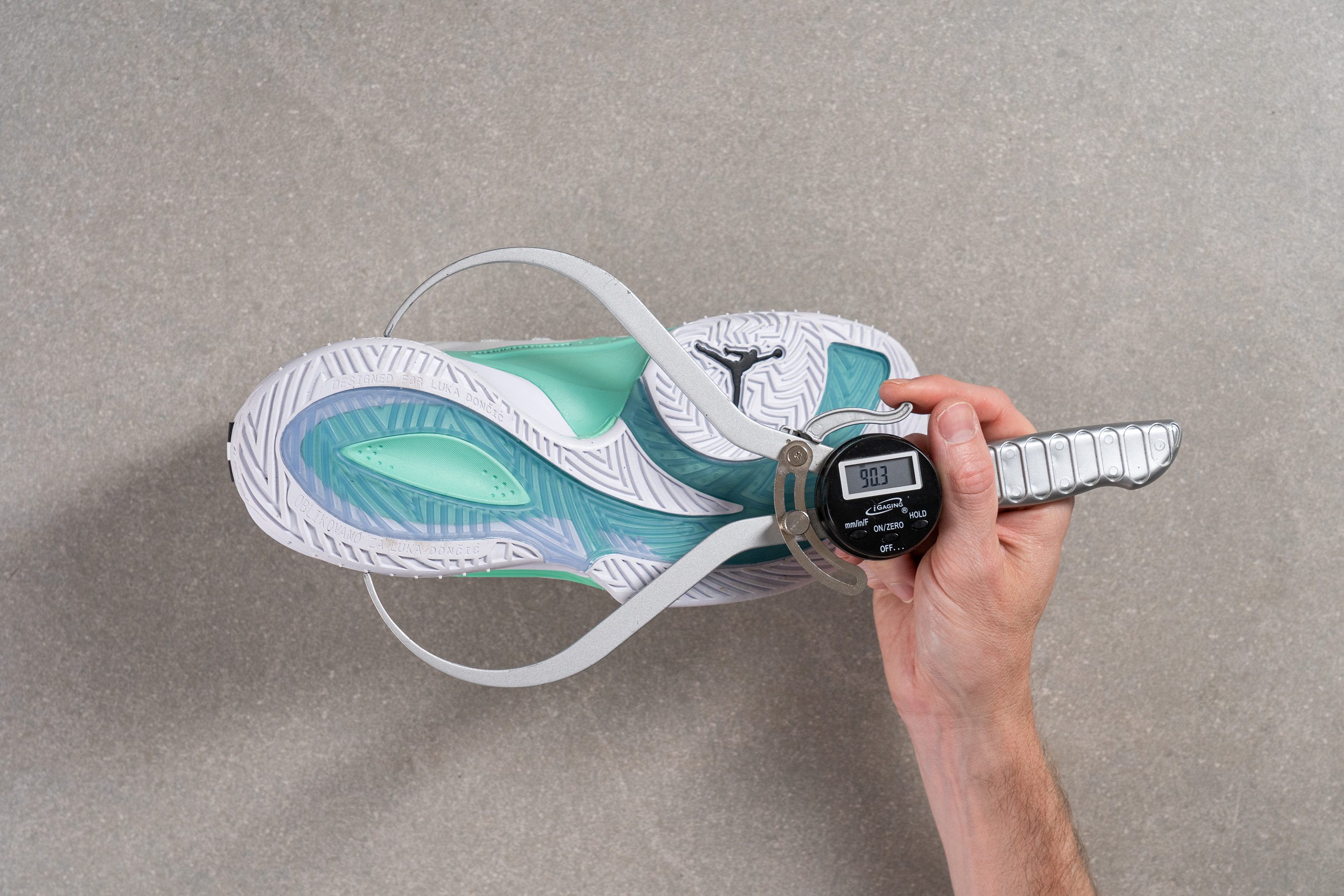
So there's nothing special here! But with the support that the extra padded and stiff heel counter provides, it's not like we were missing any stability features either.
| Luka 3 | 90.3 mm |
| Average | 89.7 mm |
Durability
Toebox durability
The same way the Luka 3's upper made us think it wouldn't be breathable, just by looking at it we bet it would actually put up a fight against our Dremel.
The tool rolled and rolled, and we saw some white material flying around, yet the toebox didn't end up all messed up!
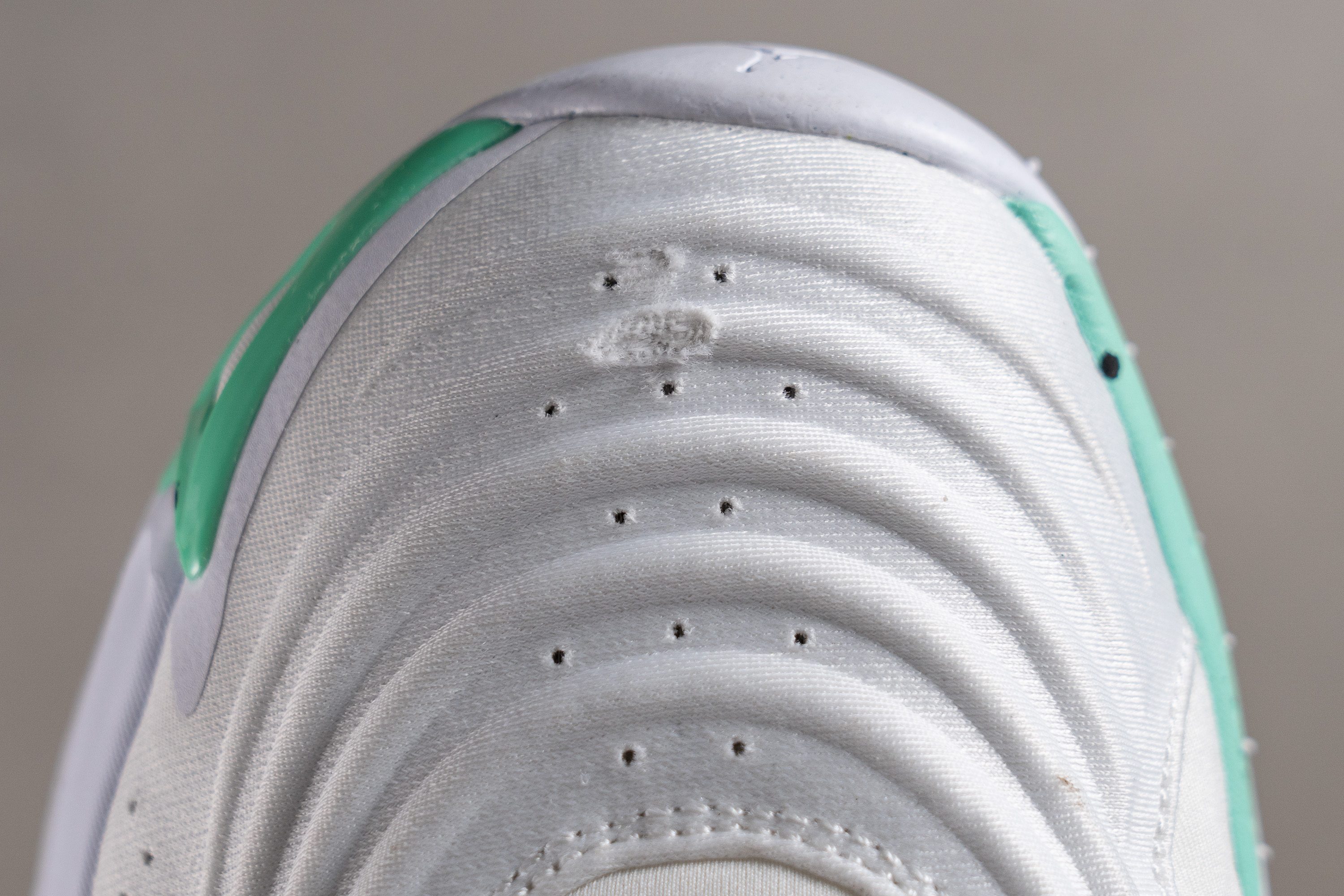
We were pretty happy with these results. Even though the shoe lost some material, it kept its integrity. Consequently, we've given the Luka 3 a solid 4/5 in our toebox durability test.
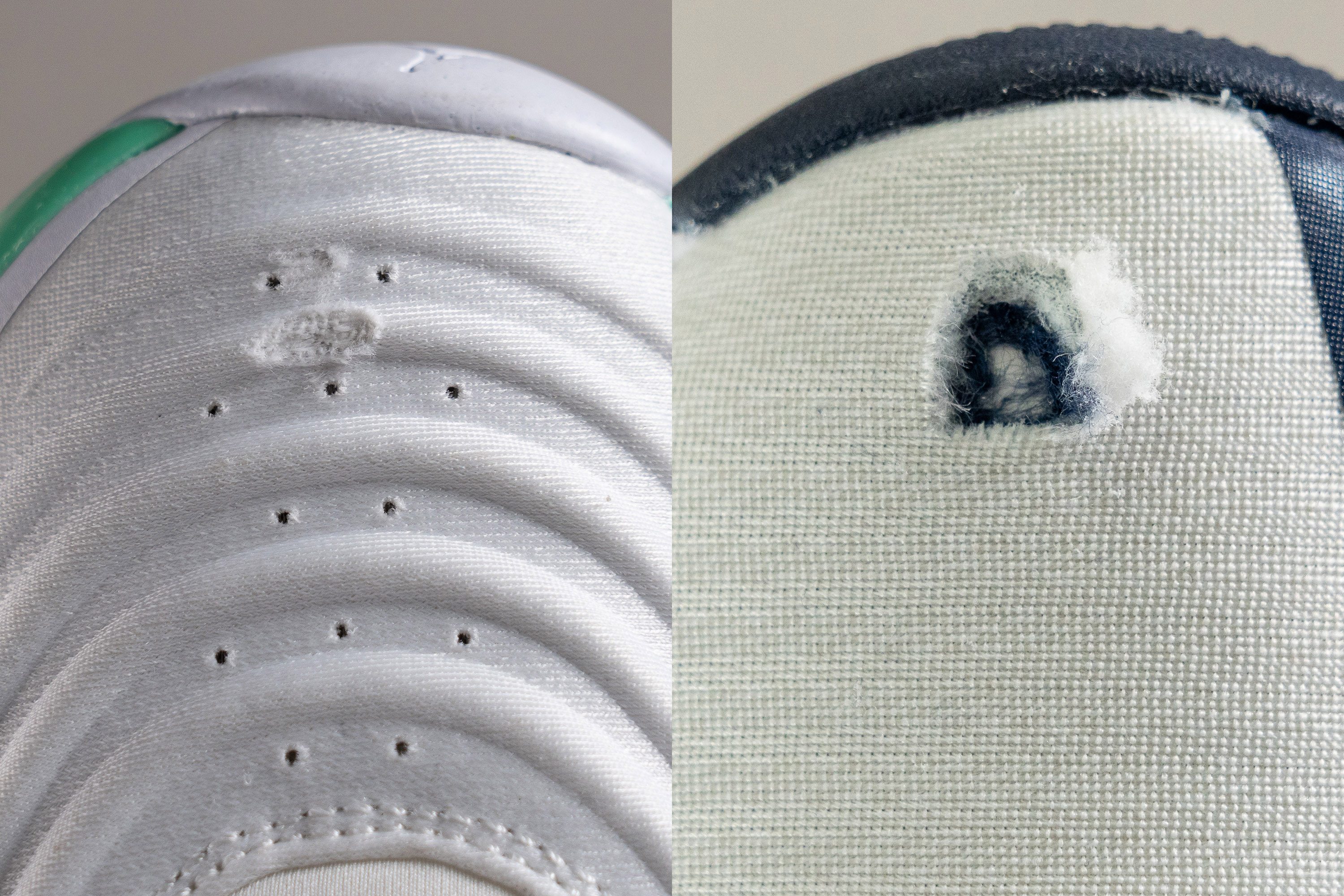
It's easier to see how good a 4/5 is when we compare it to a 1/5. The poor Nike Precision 6 ended up with layers and layers of material completely destroyed!
| Luka 3 | 4 |
| Average | 3.7 |
Heel padding durability
We went all the way back to the heel to test its durability too. We're usually pretty concerned about this specific spot in basketball shoes, as it has to endure the constant friction of going up and down the court, jumping, layups, fakes, quick lateral movements..., and anything in between.
That's why we need our Dremel! At 5K RPM and with a force of 3.2N, the tool goes all in to see if the heel padding is cut to be a pro player or if it'll stay as a benchwarmer.

We were pretty happy about the results! It might not be absolutely perfect, but the heel showed great resistance to abrasion. That's why we decided to give it a high 4/5 on our heel padding durability test.
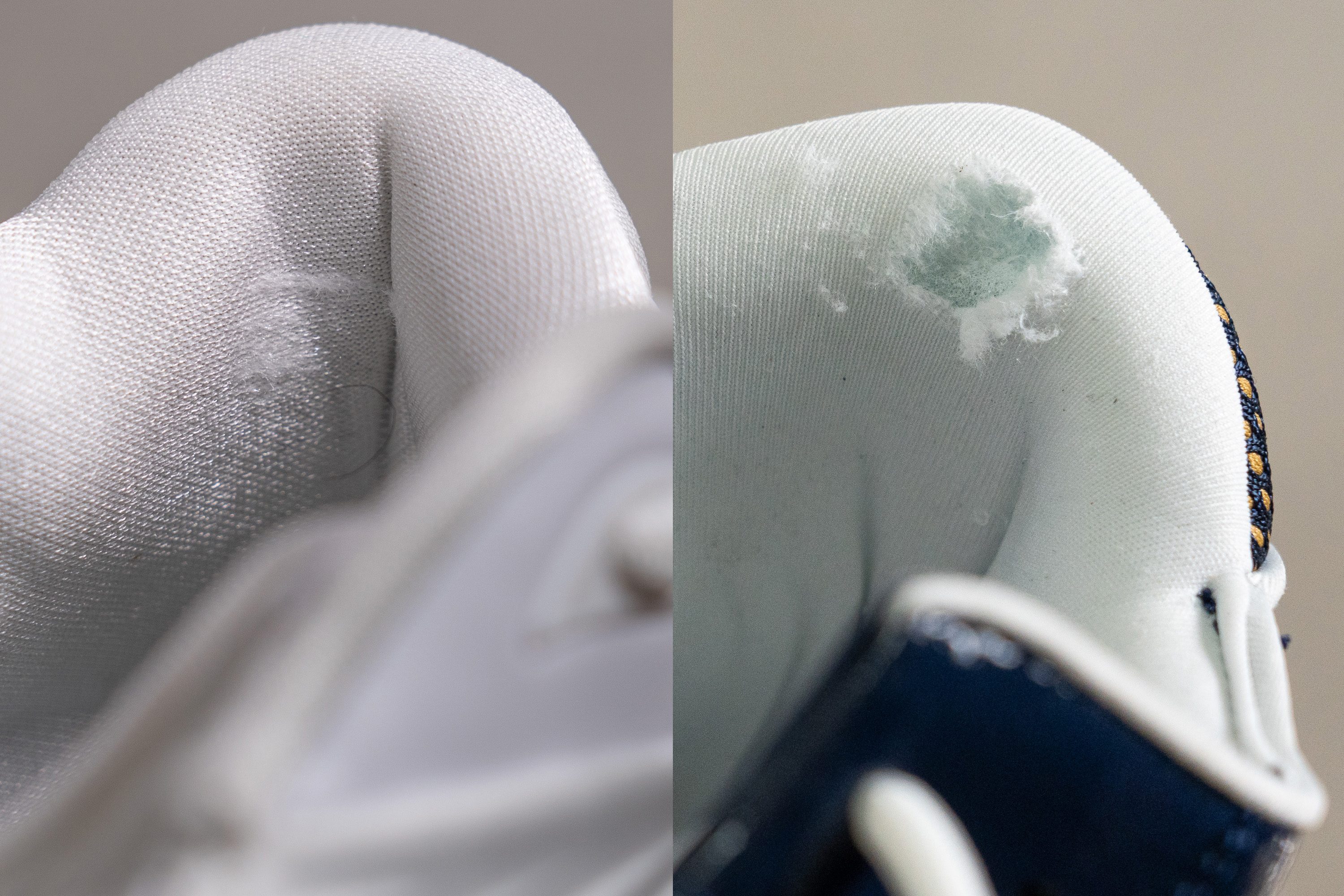
Just look at how different these two results are. On the left we have the Luka 3, and on the right the Reebok Answer DMX. The latter scored a sad 1/5 on this same test, and you can clearly understand why just by looking at how messed up things ended up back there!
| Luka 3 | 4 |
| Average | 3.7 |
Outsole hardness
Even though we'll talk about this later on, when we put the Luka 3 upside down, we couldn't stop staring at its outsole. The Luka 1 and the Luka 2 already had translucent outsoles, yet the Luka 3 goes for the same design idea but with an extra pinch of style.

Anyway, our durometer returned 88.4 HC, which means this shoe's outsole is harder than average. This usually means that the material used is more on the durable side. Let's ask our Dremel!
| Luka 3 | 88.4 HC |
| Average | 81.5 HC |
Outsole durability
At 10K RPM and with a force of 3.2N, our Dremel attacked the Luka 3's beautiful outsole during 22 seconds.
Once the fight was over, we grabbed the shoe again and measured the depth of the dent with our tread gauge. At 1.1 mm, the result is pretty close to the average.
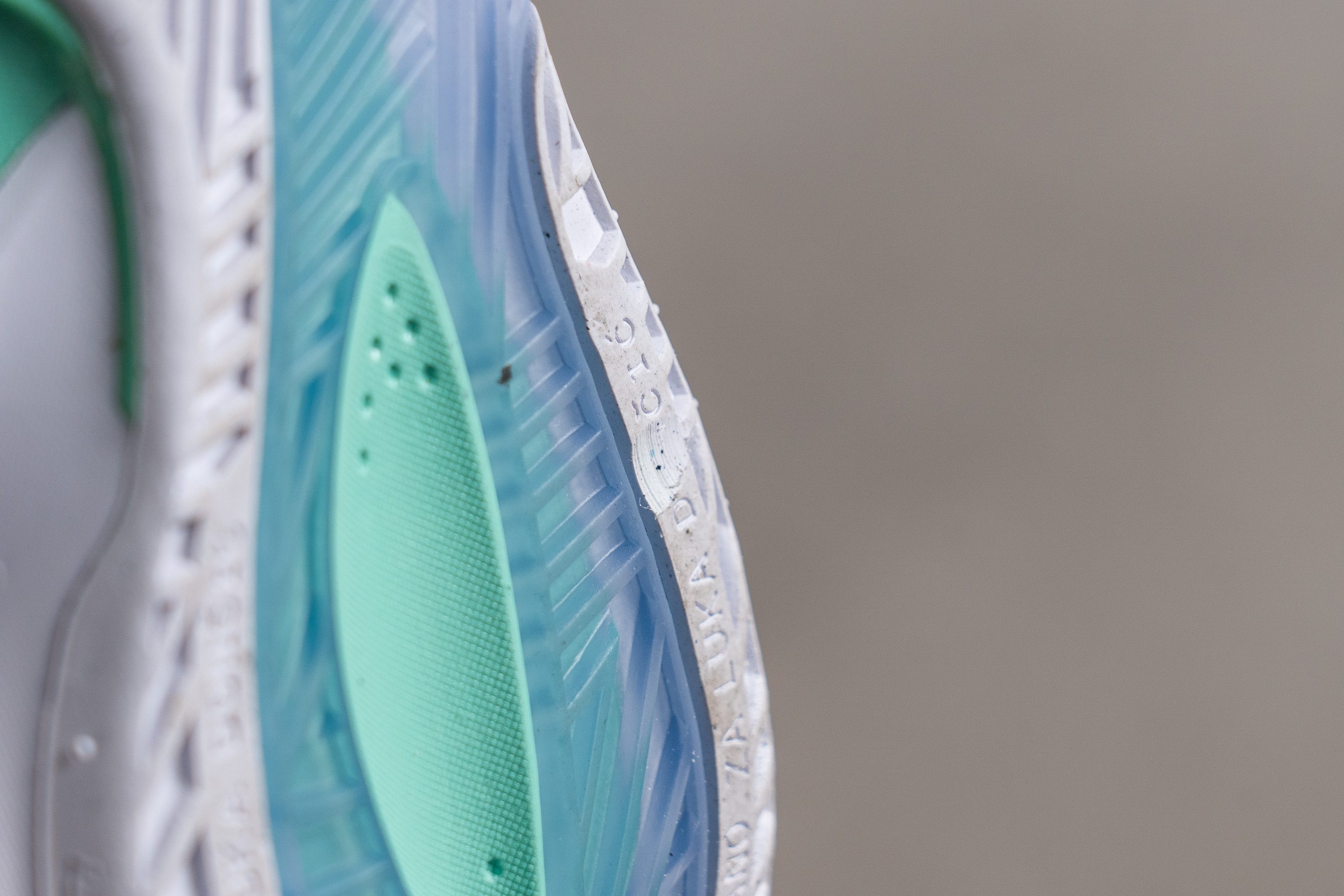
In other words, the rubber used in the Luka 3's outsole was pretty hard, so we expected it to get a score at least lower than average. Personally, we wouldn't recommend this shoe to play outdoors constantly, as its rubber might wear down sooner than expected.
| Luka 3 | 1.1 mm |
| Average | 1.0 mm |
Outsole thickness
At 4.0 mm, our calliper indicated that this Jordan's outsole thickness is just average.

But we're not saying this as something bad, of course! What we mean is that the brand went for a simple and typical approach regarding the outsole. The rubber proved to be pretty hard, so using a thicker layer would just add some extra weight to the shoe... which is a no-no!
| Luka 3 | 4.0 mm |
| Average | 4.0 mm |
Misc
Insole thickness
The brand focused on getting things simple with the insole, which was... slightly disappointing, to be honest. But wait, wait, don't come at us just yet, let us explain!
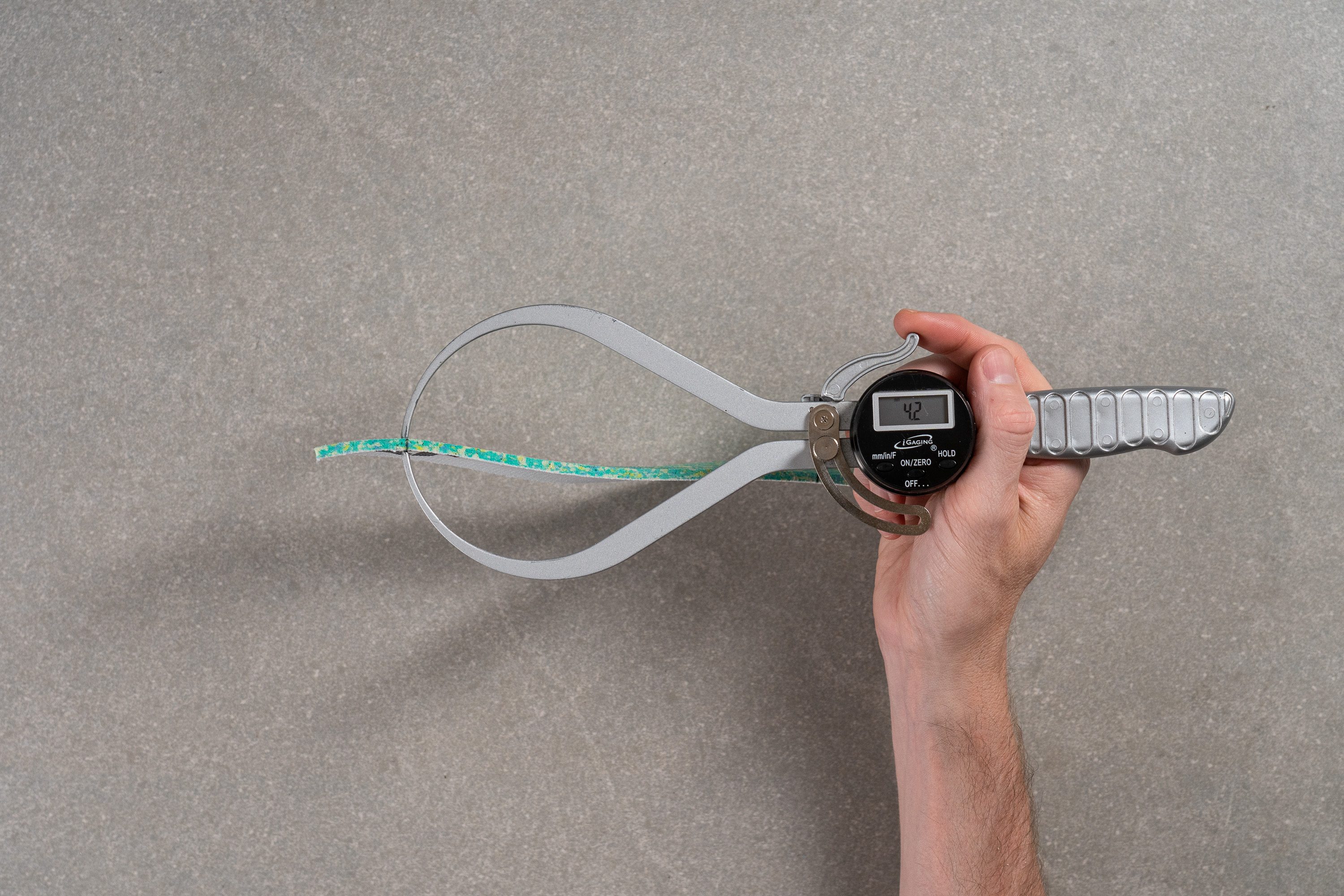
The Luka 3 is not a budget shoe! For its price, we expected some Nike technologies in the midsole or a nice insole. Yet we got... a 4.2 mm one with nothing special. The only thing that we liked is that it seems to be made using recycled materials and that it's removable, which is always a plus.
| Luka 3 | 4.2 mm |
| Average | 4.9 mm |
Removable insole
Removable insoles are our thing, that's for sure.

This means that you can use your own orthotics if needed. Or maybe just change insoles to add some extra cushioning or support!

| Luka 3 | Yes |
Reflective elements
The Luka 3 doesn't include reflective elements, we verified it in our lab!
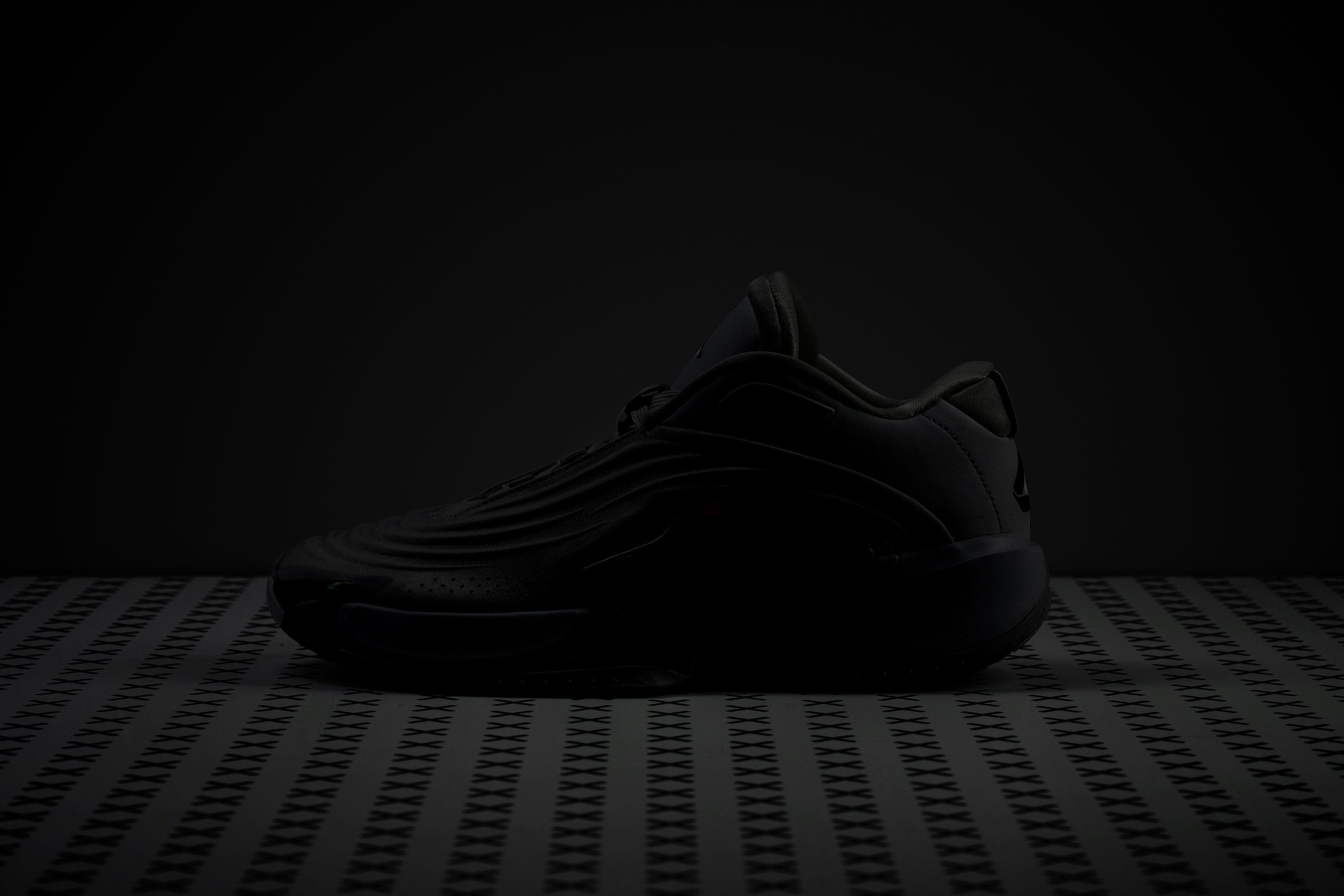
| Luka 3 | No |
Tongue padding
This shoe's tongue is incredibly padded at the top, right where the laces are tied.
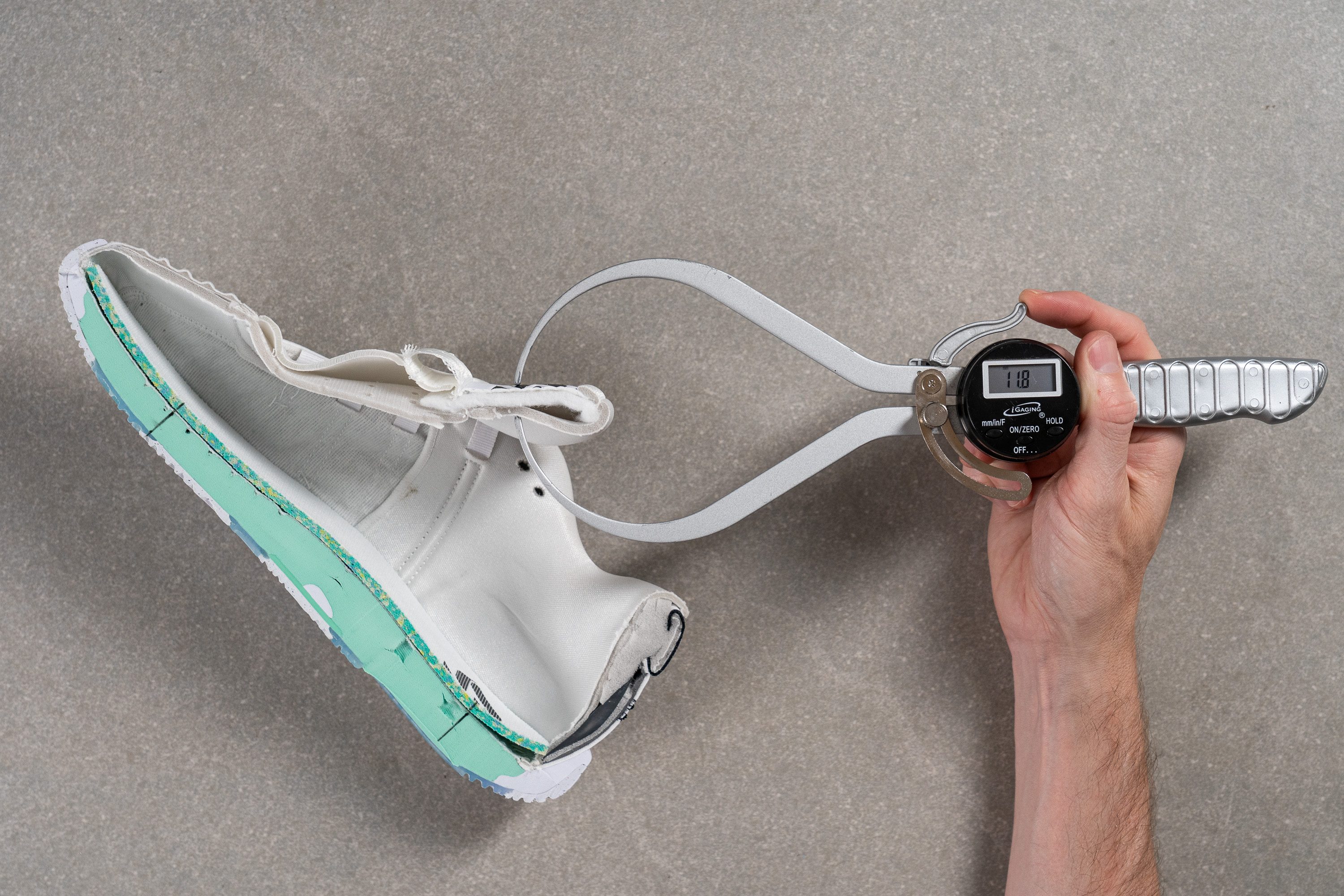
Not only did this add some extra comfort to our instep, it also gave us the freedom to tie our laces as tight as we wanted, protecting us from any kind of hot spots!
| Luka 3 | 11.8 mm |
| Average | 9.3 mm |
Tongue: gusset type
Honestly, we did expect a gusseted tongue here. Both the Luka 1 and Luka 2 have semi-gusseted tongues, so... what happened with the 3, Nike?
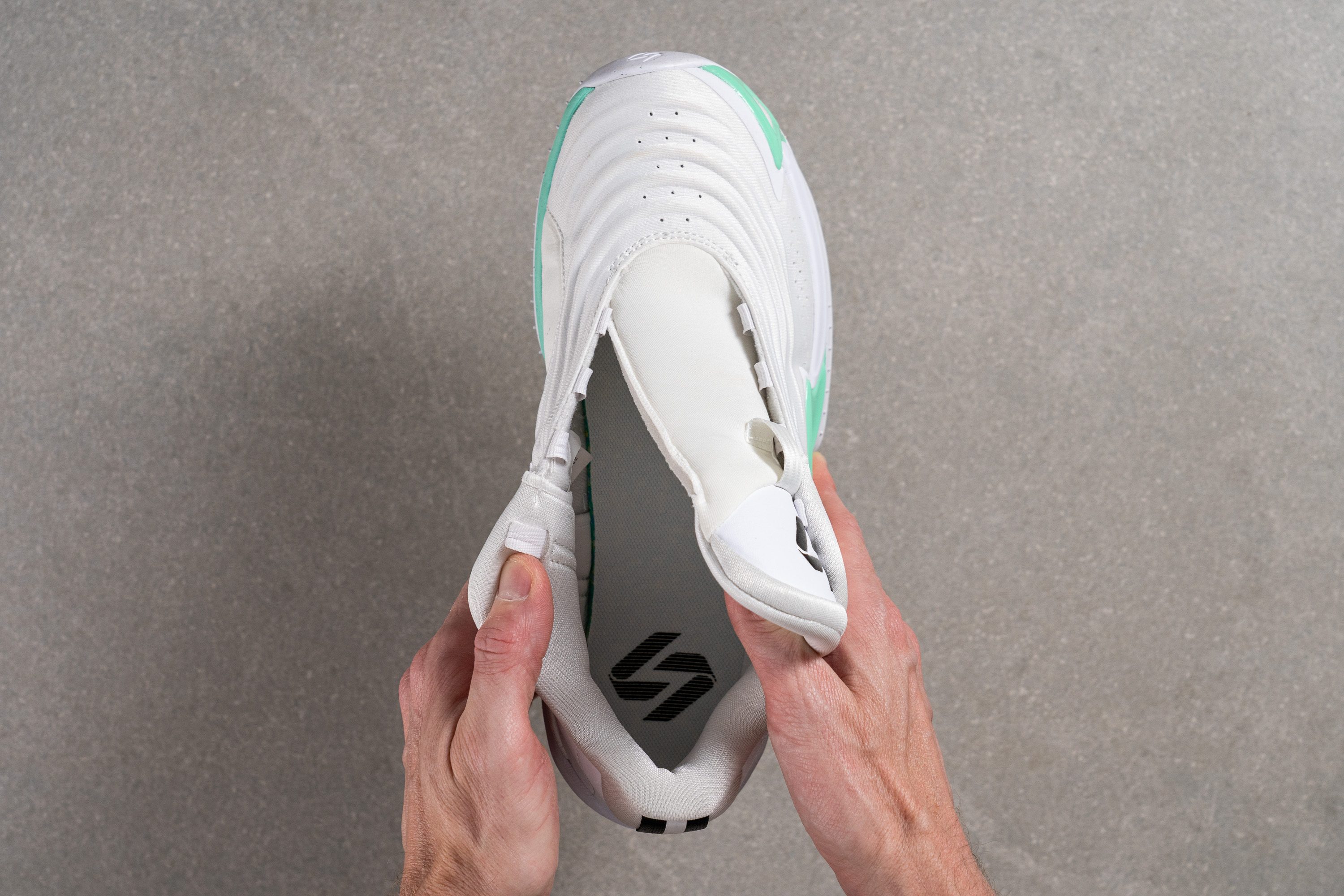
It's true that there's a loop that reassures the whole fit, structuring up the lacing system. Despite our love for this and for that extra eyelet at the top, which gives us the possibility to go for a runner's knot, we would have been happier if this newest version had at least a semi-gusseted tongue.

It's not like we're not satisfied with the Luka 3's lockdown feel. But you know, even if a gusseted or semi-gusseted tongue meant some extra weight, it's also an appropriate feature for a shoe with this price.
| Luka 3 | None |
Heel tab
No finger loop, no pull tab, no nothing. The Luka 3 keeps its aesthetics clean with just a couple of details at the back!

We really liked the brand's touch adding different logos in the heel. In the right shoe, we've got the Jumpman, and in the left shoe, Luka's own logo. Super cool!
| Luka 3 | Finger loop |

